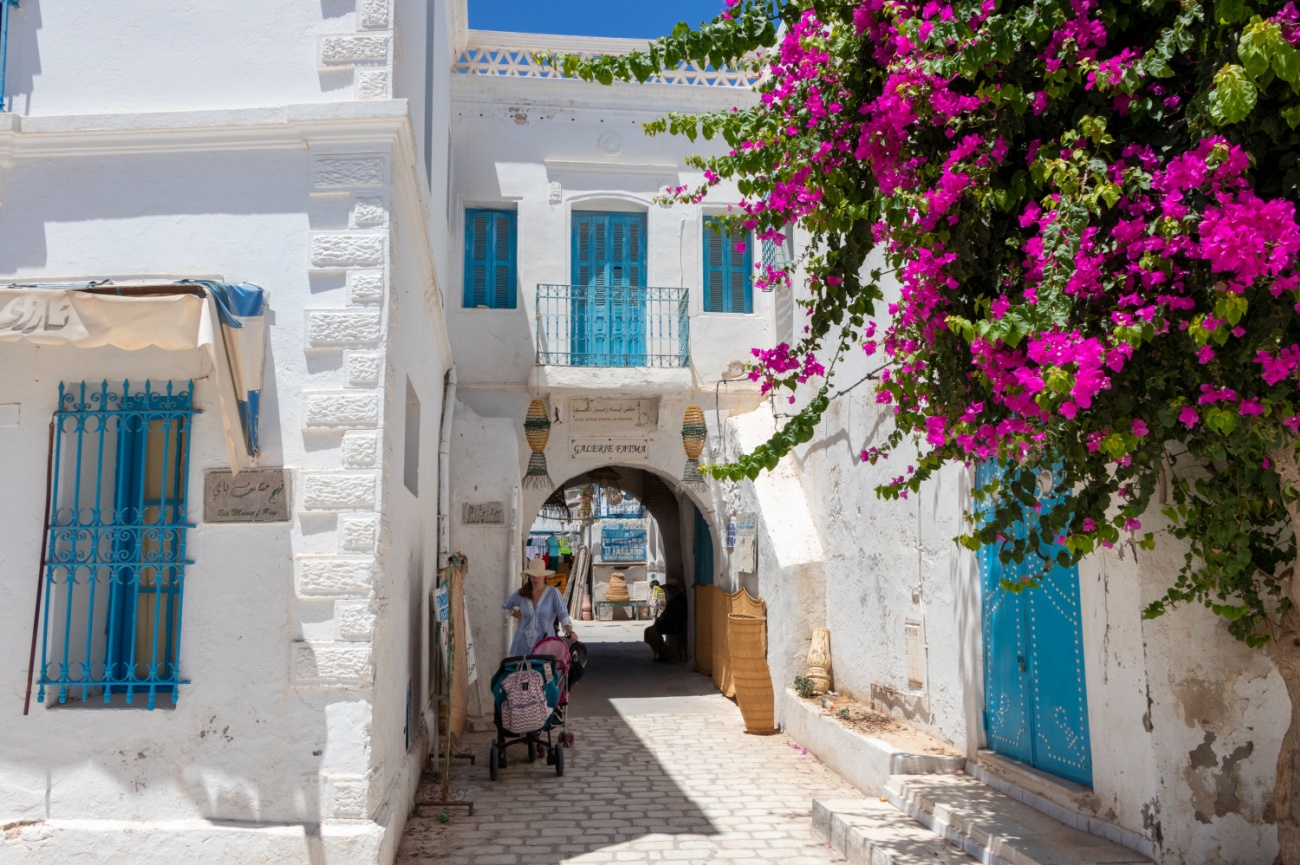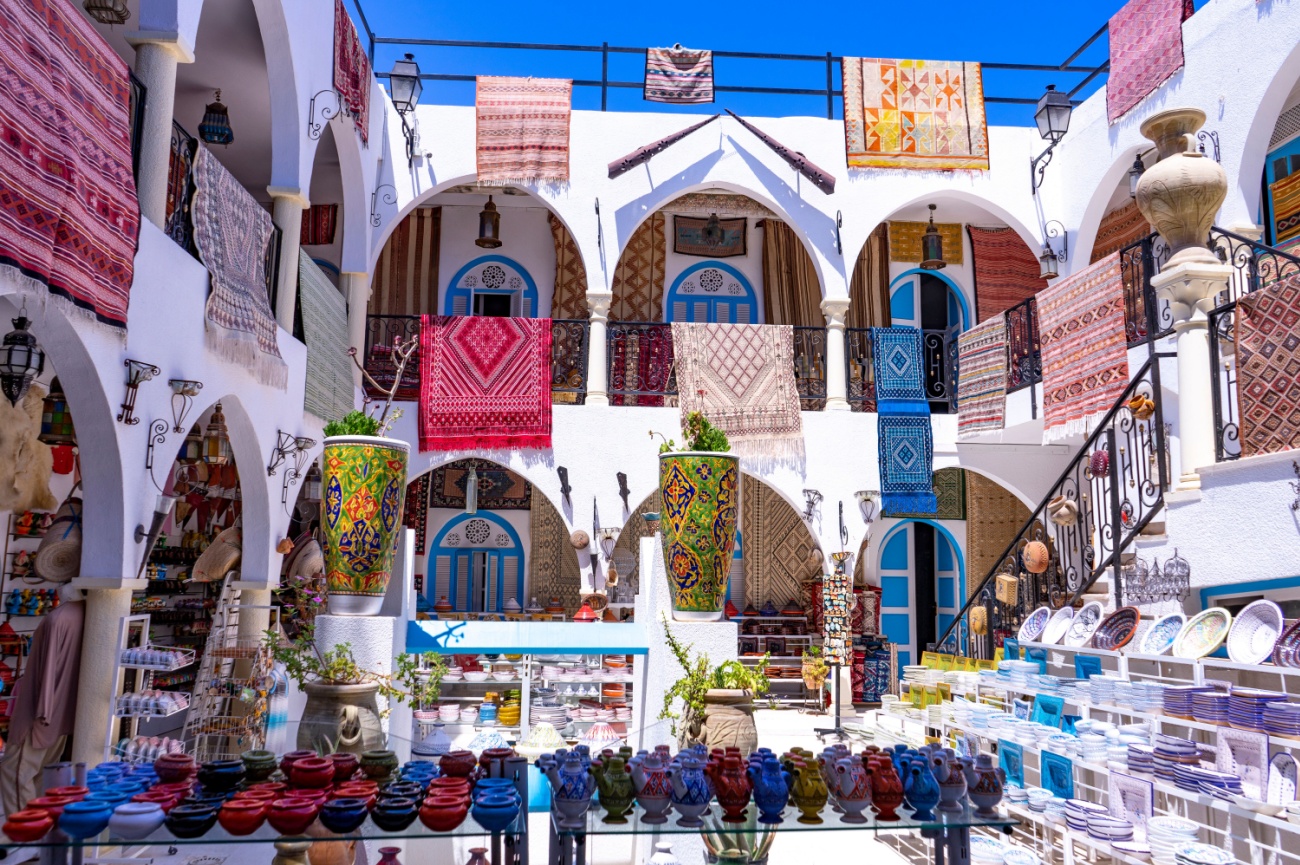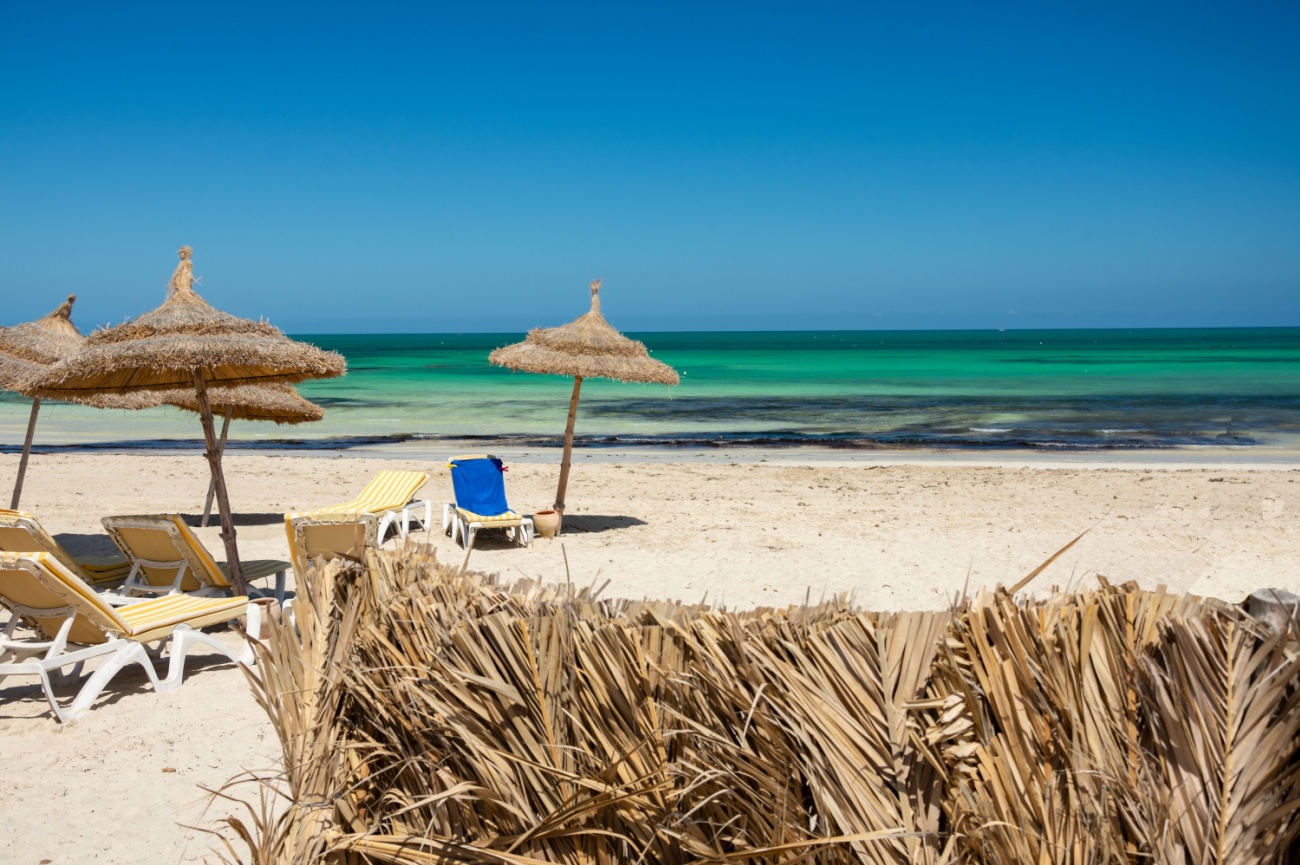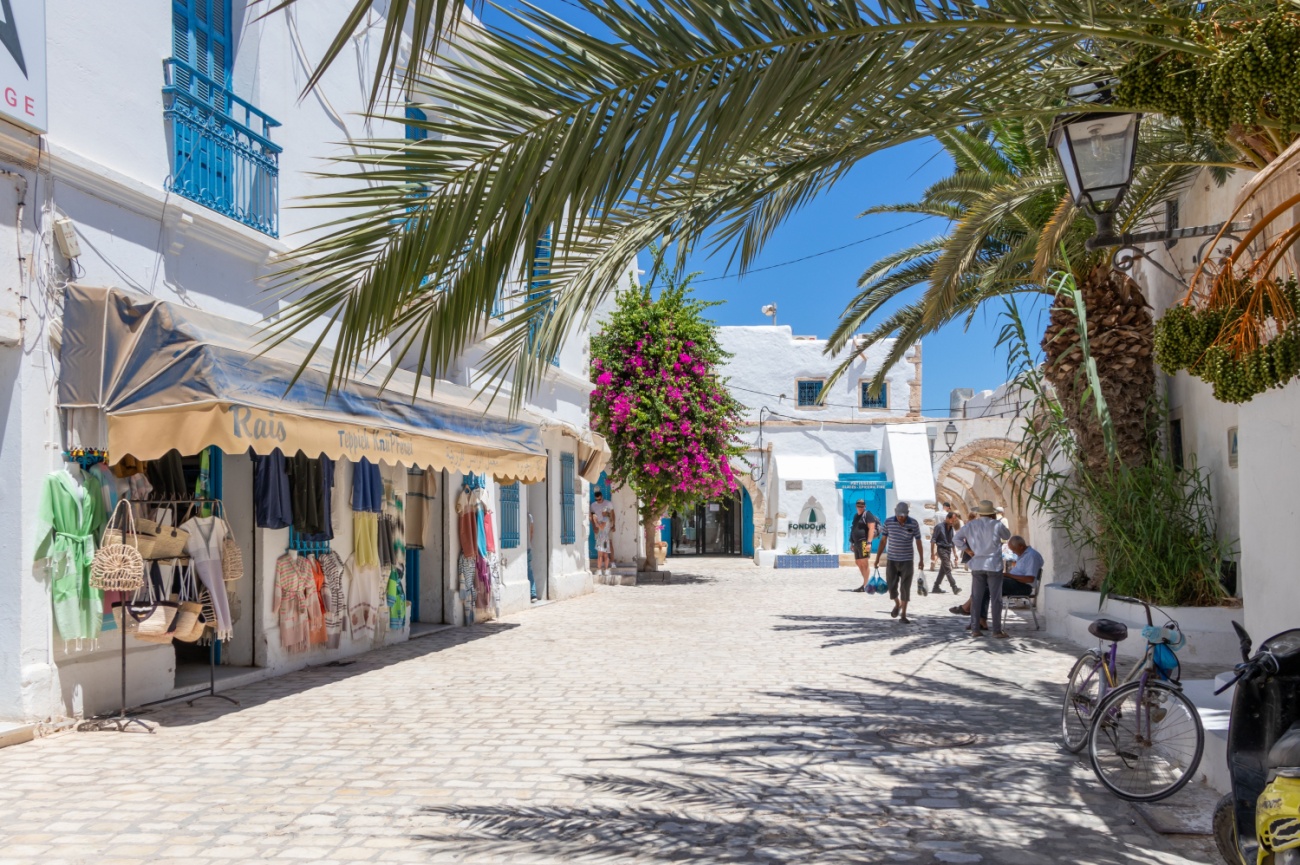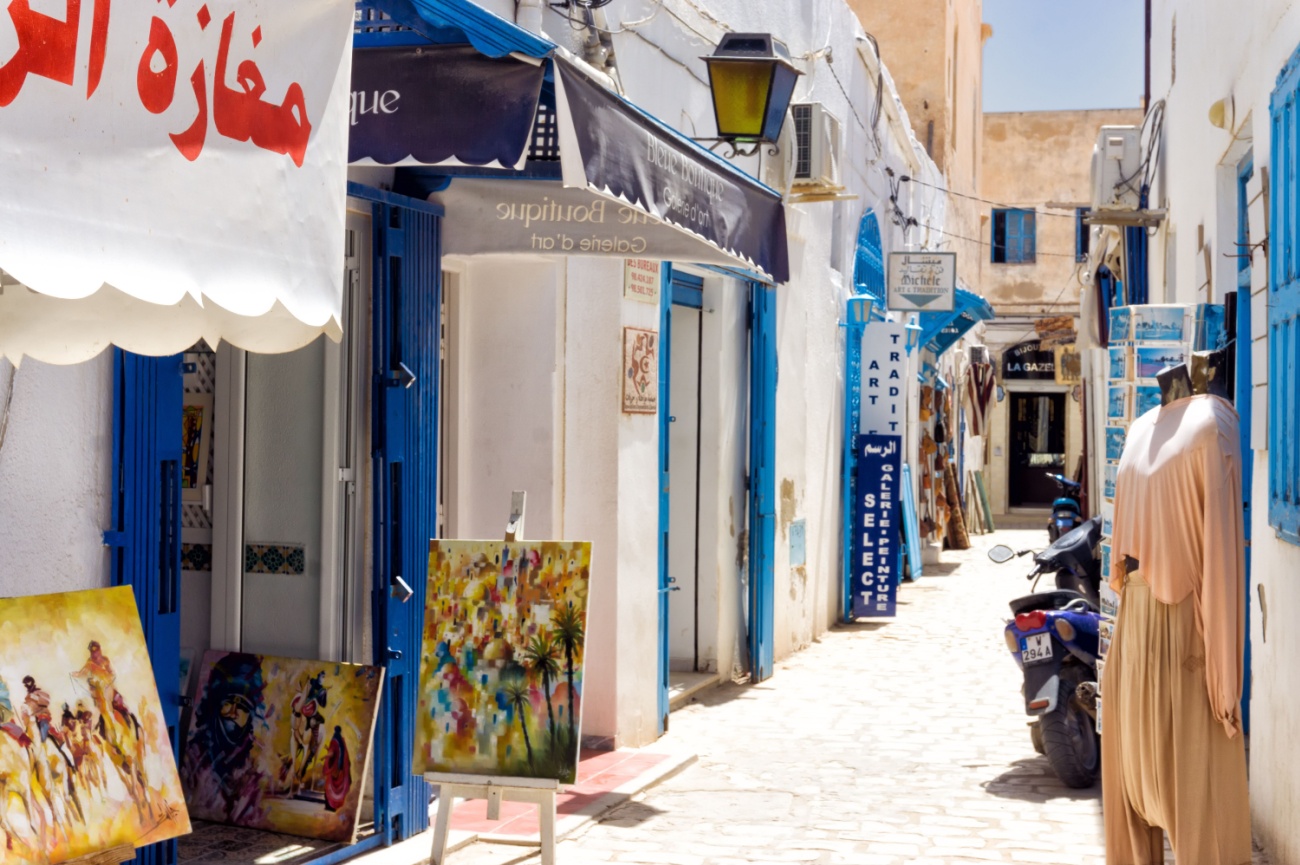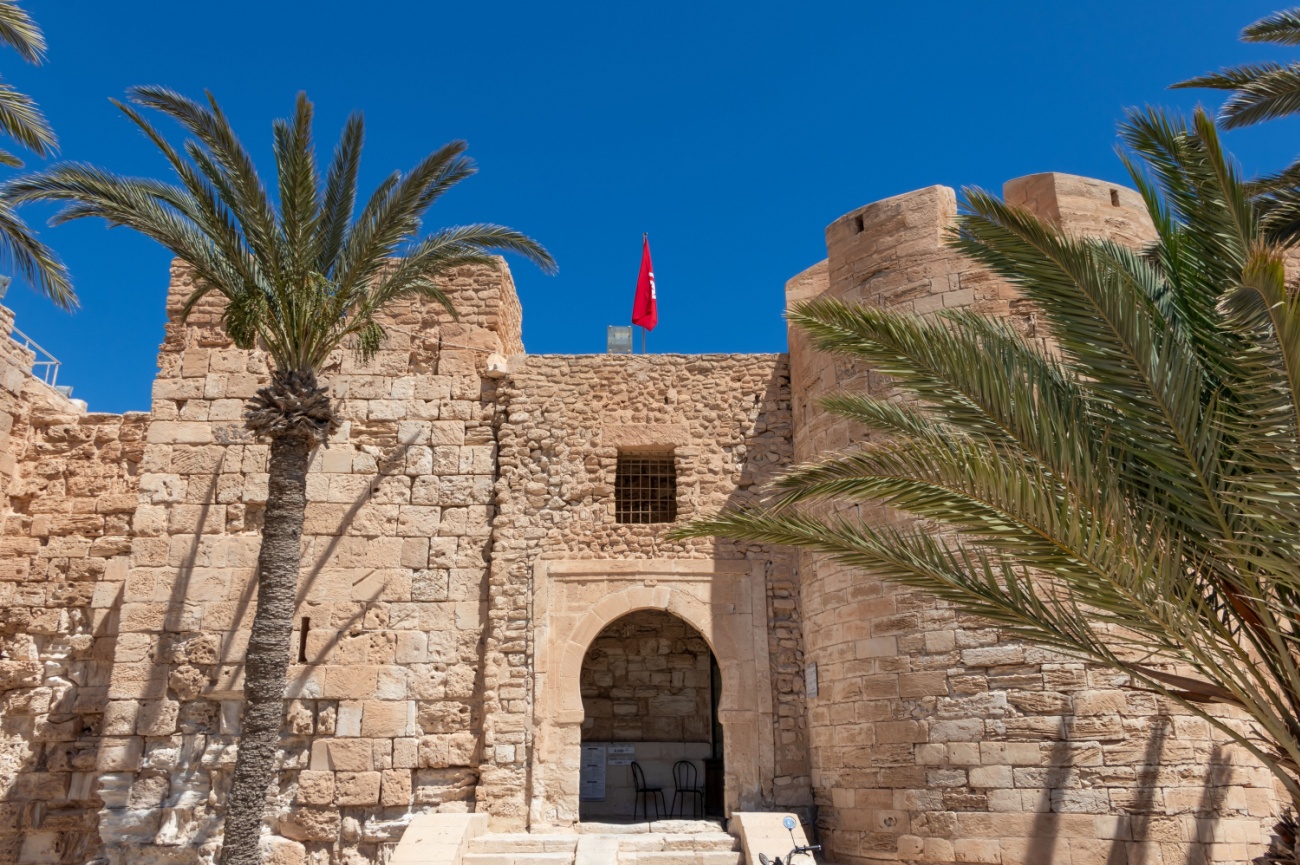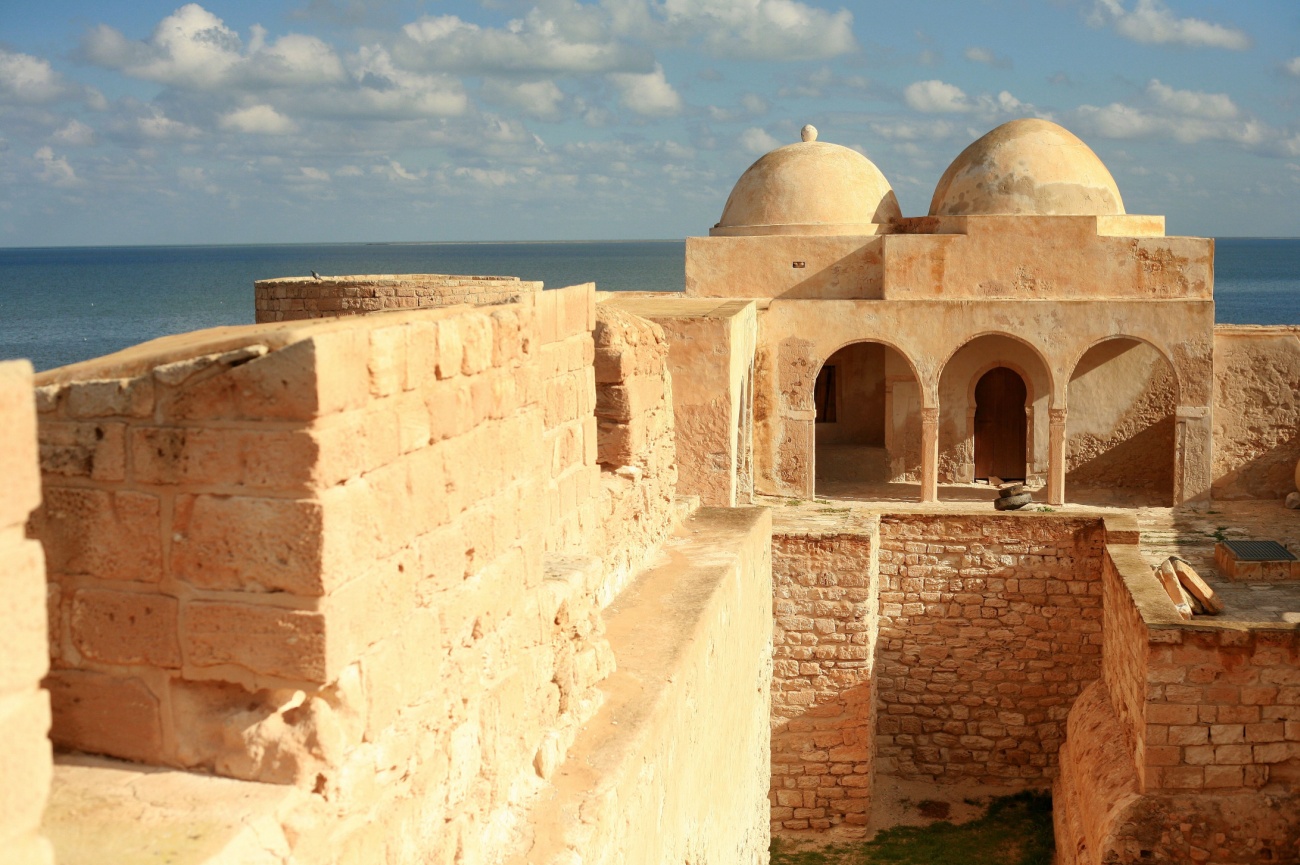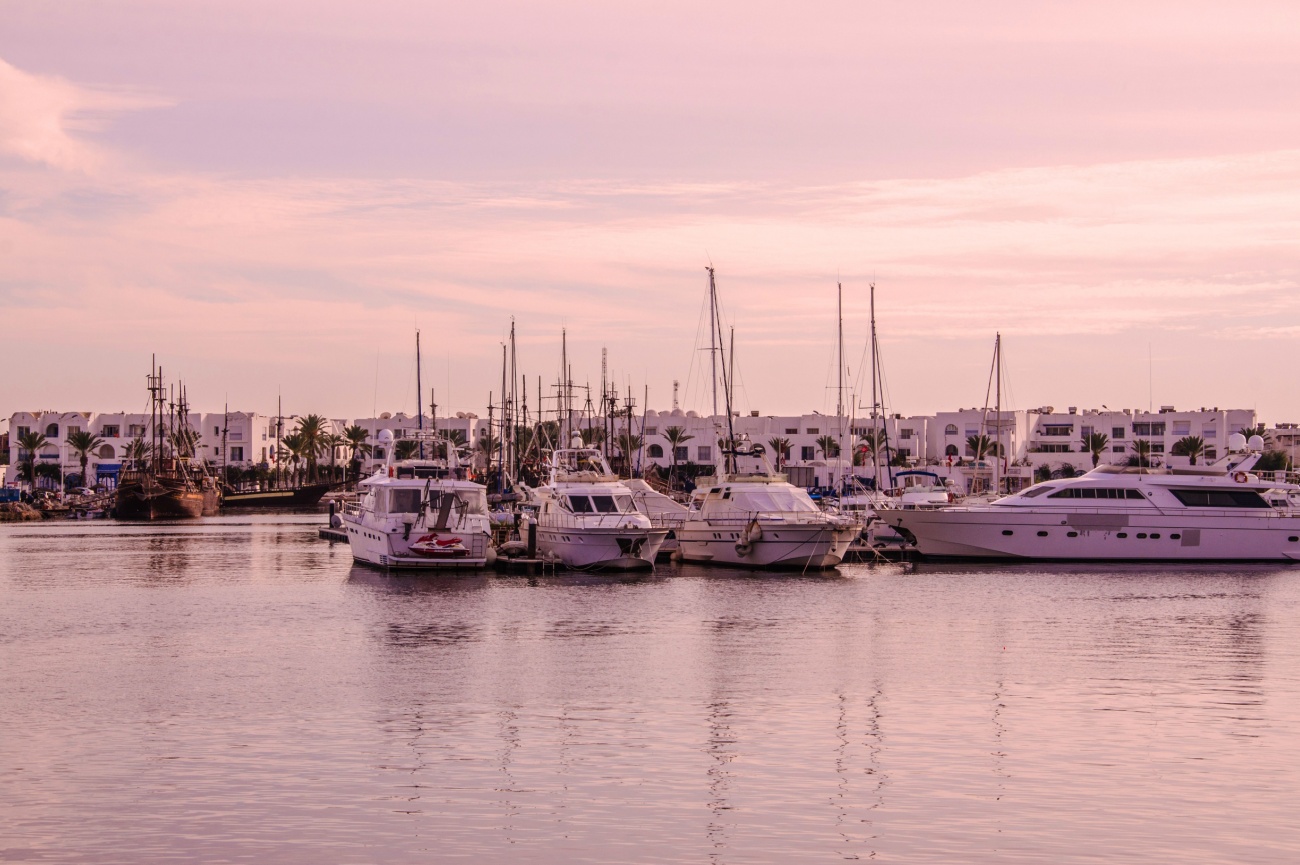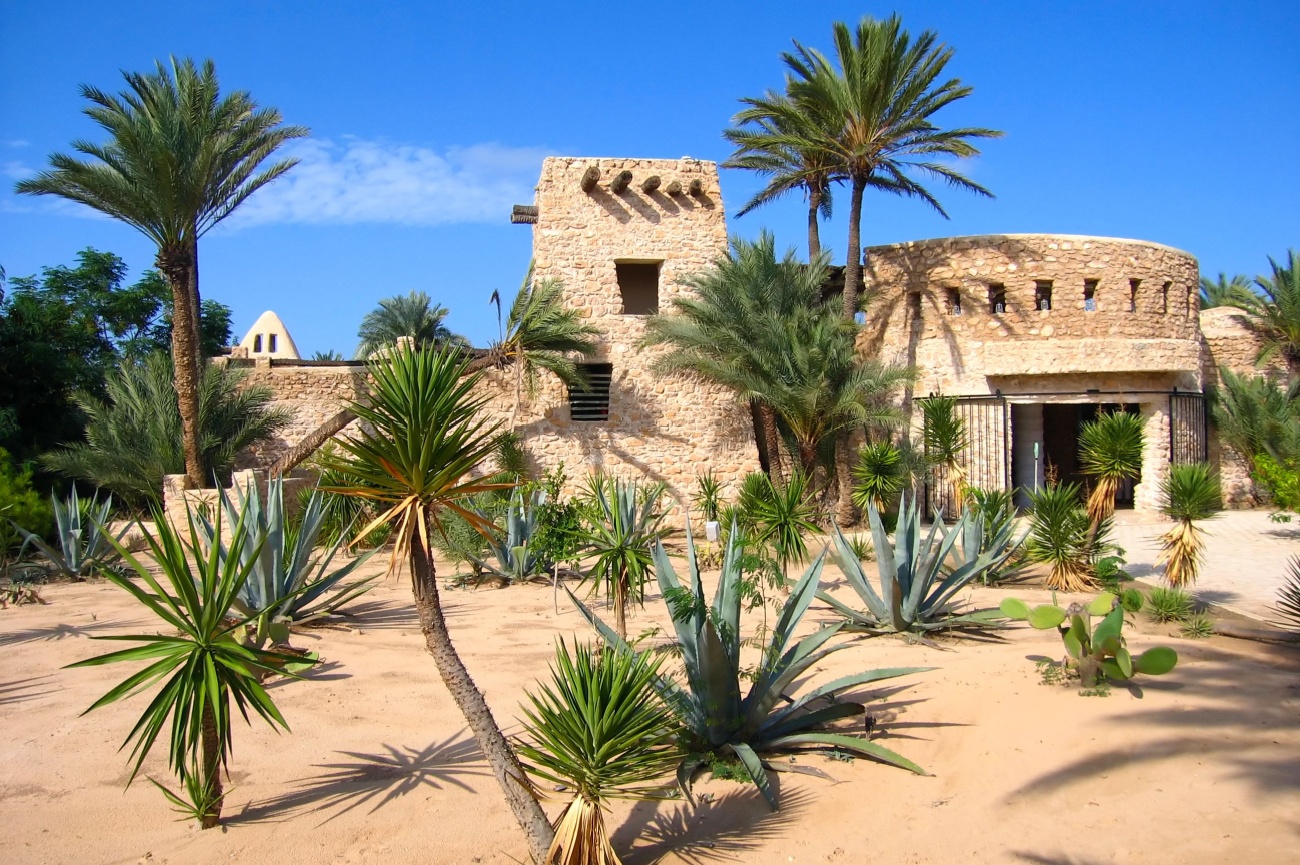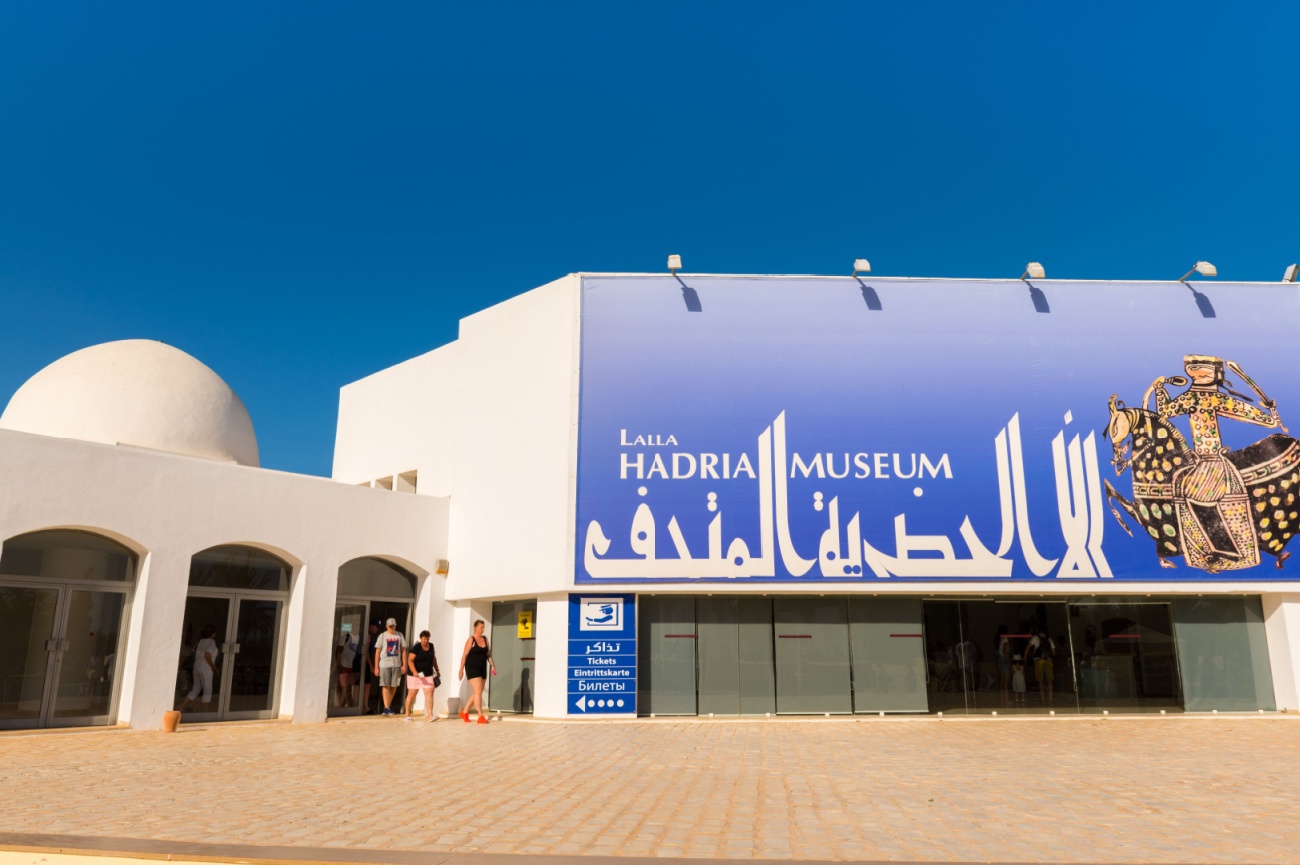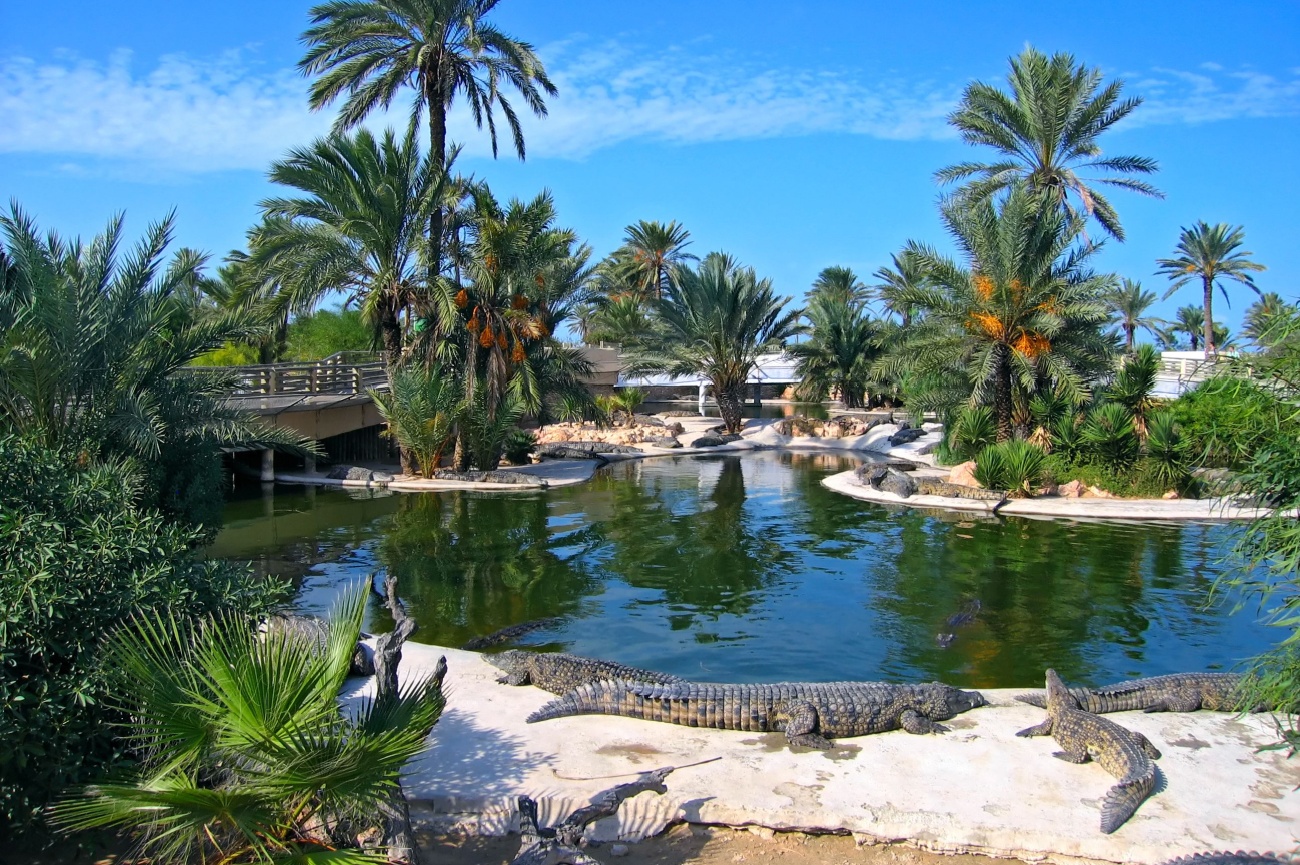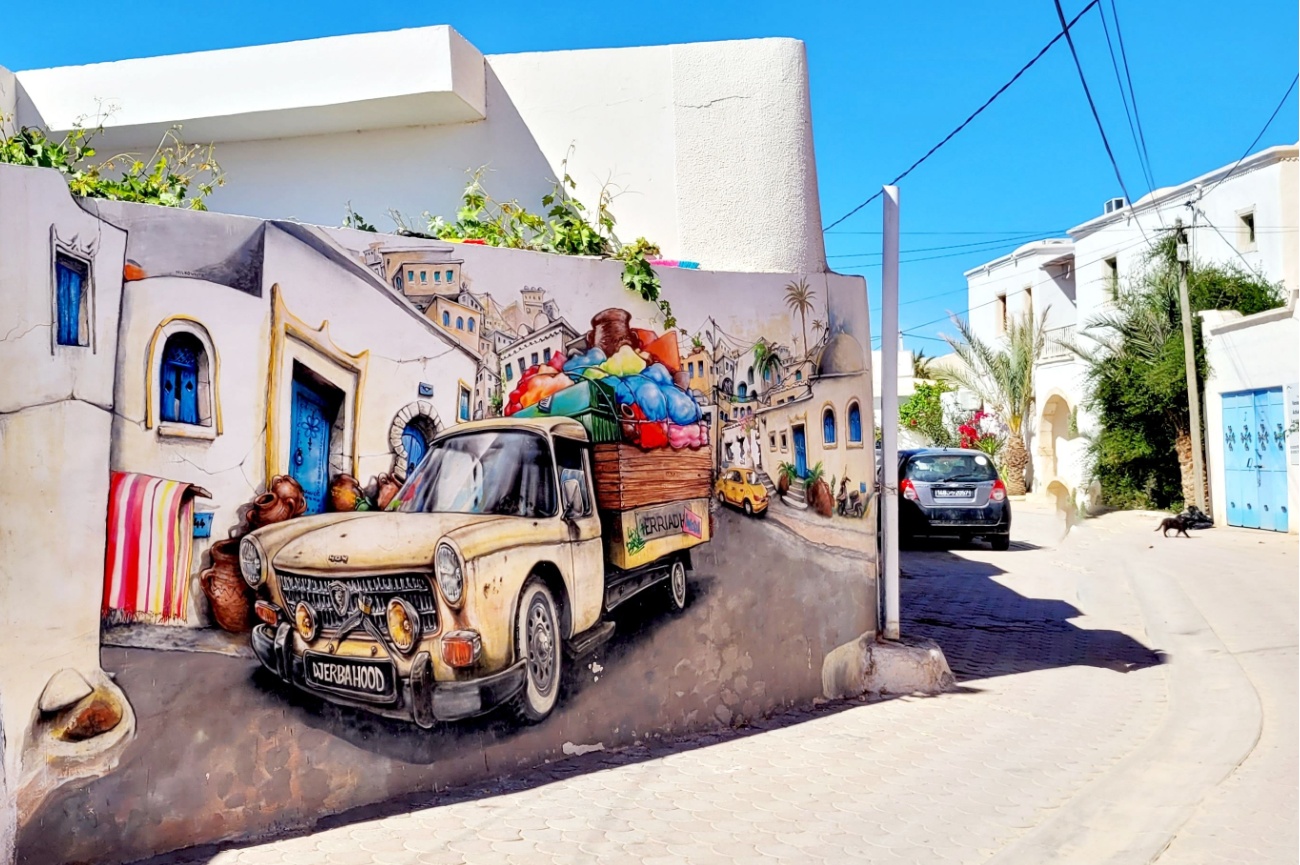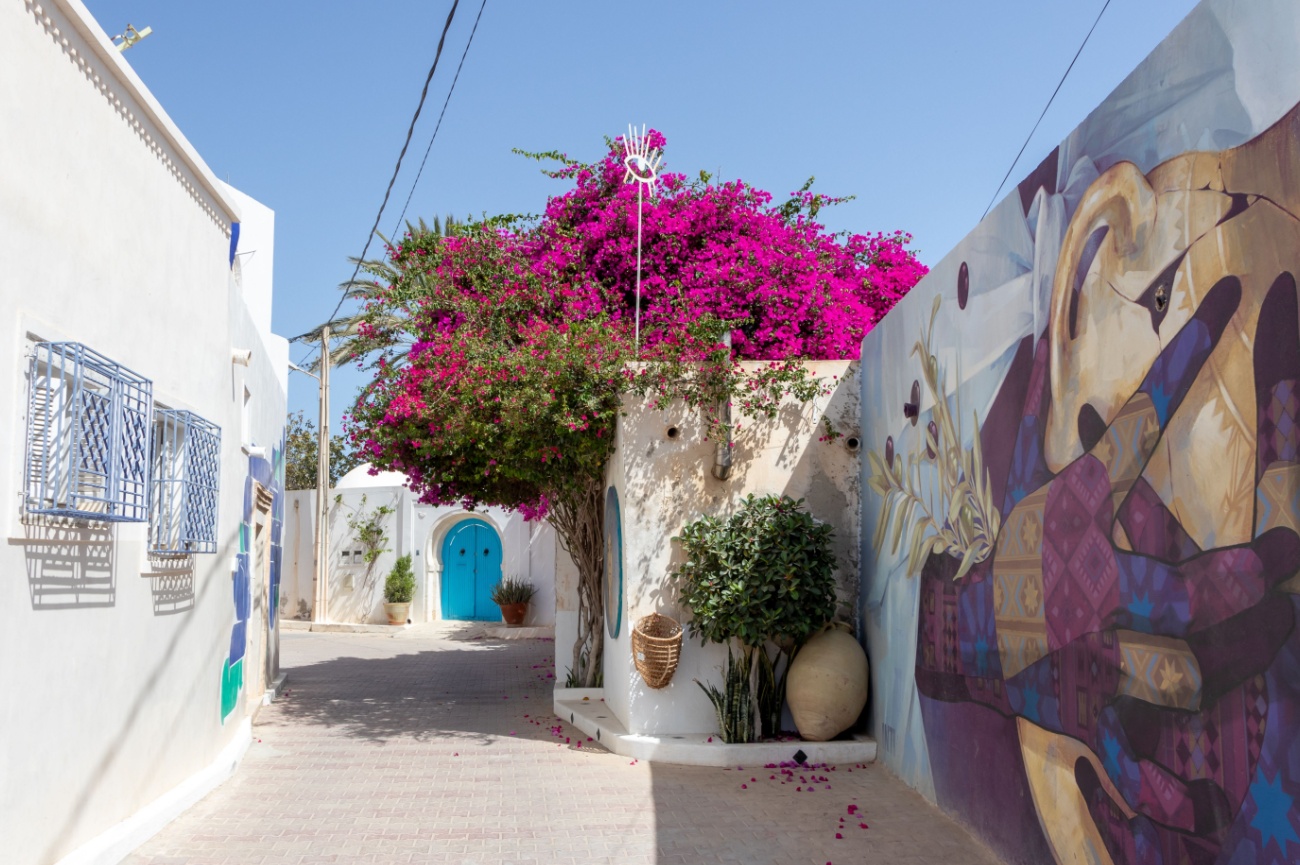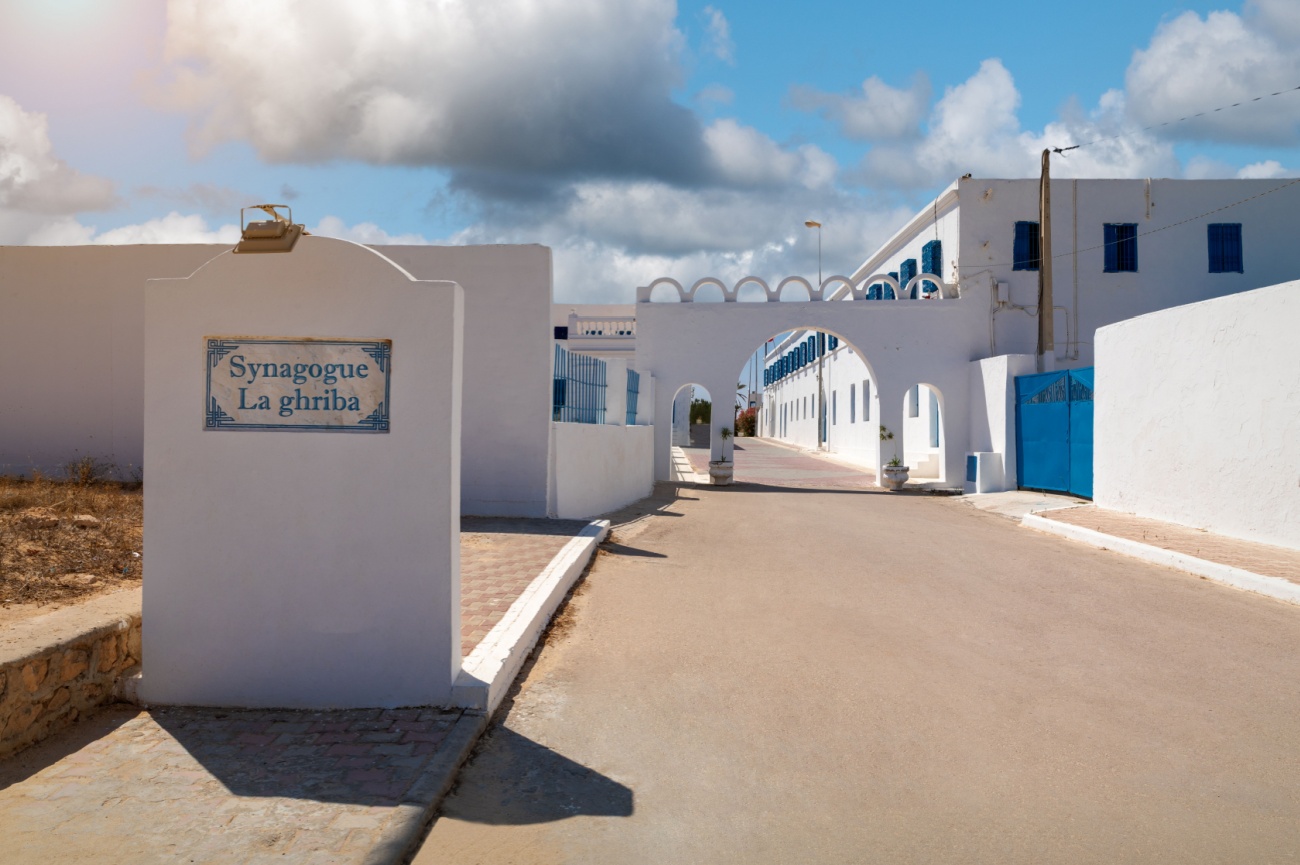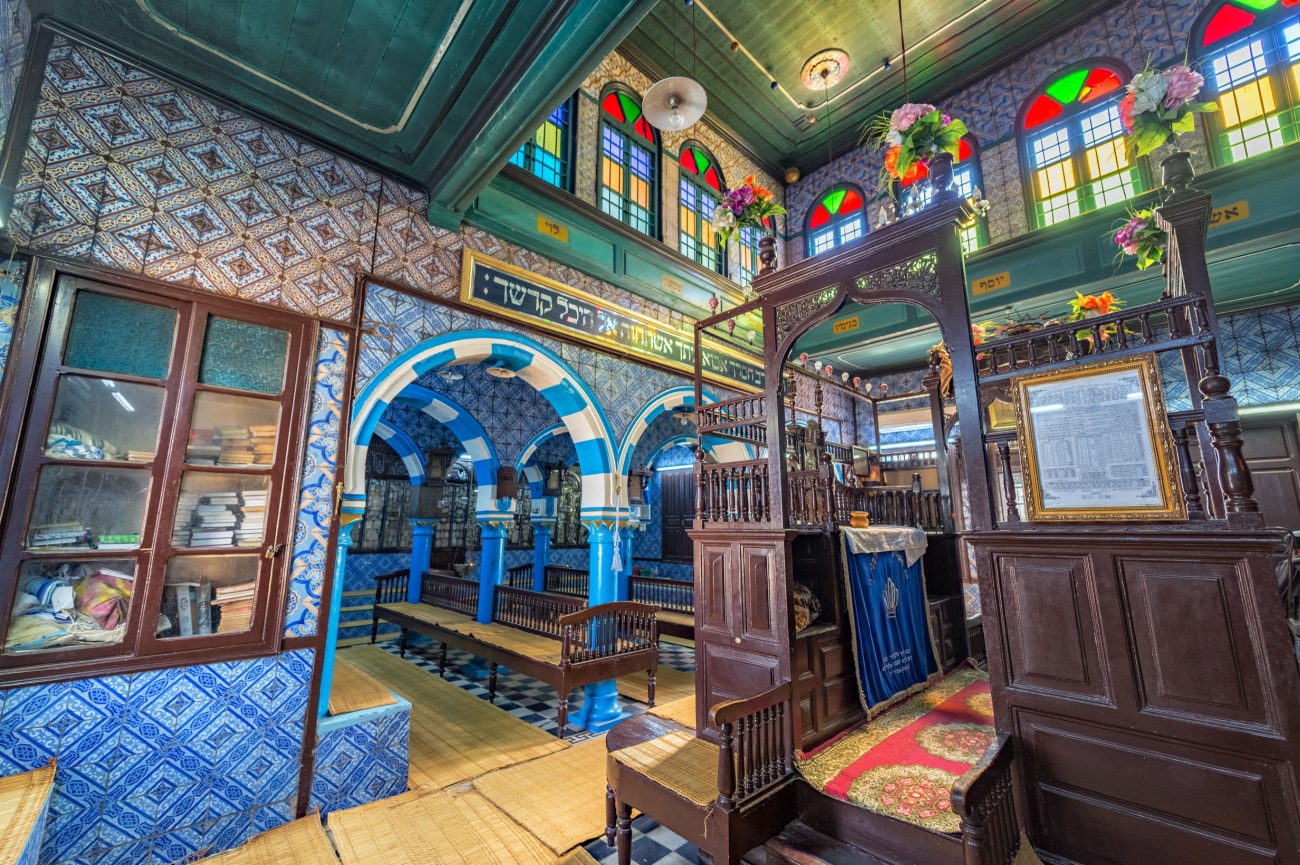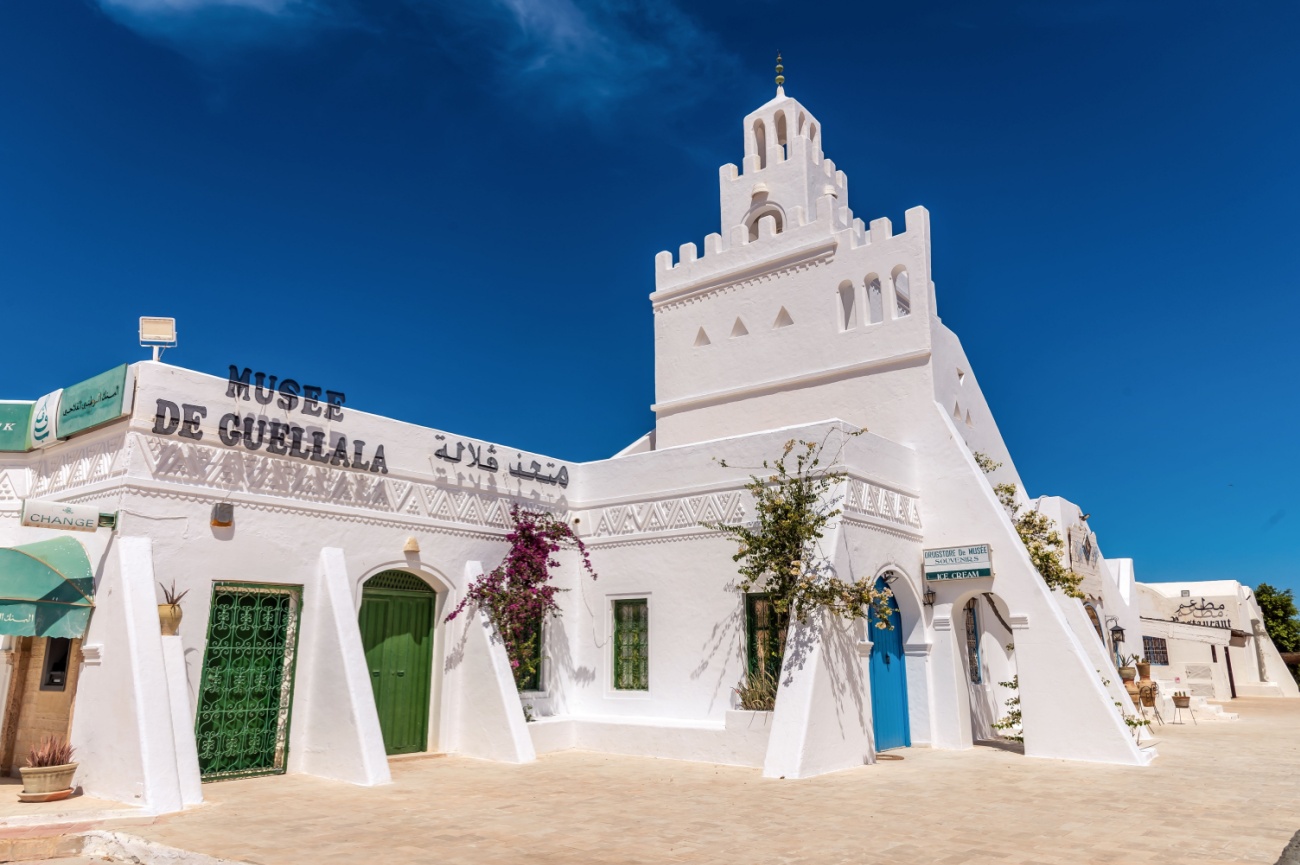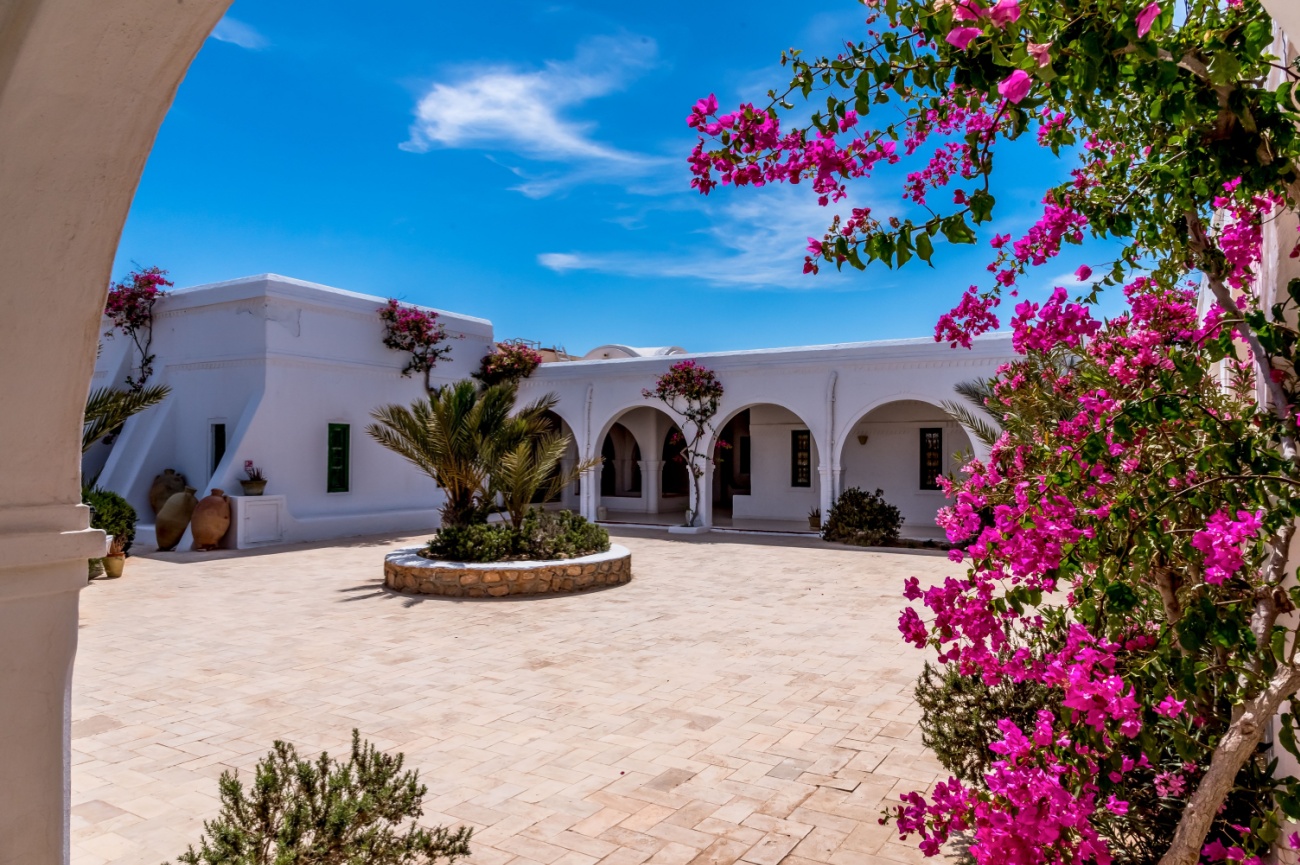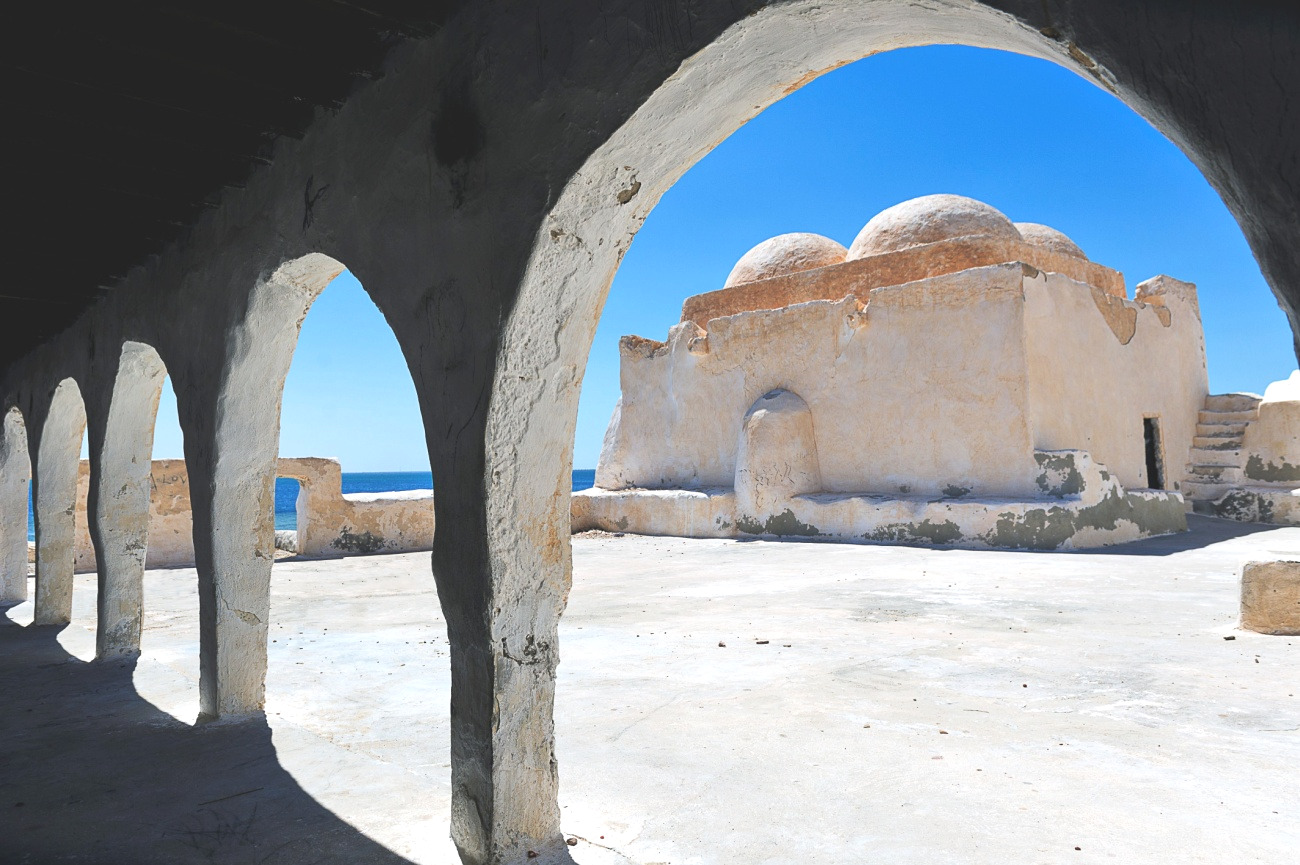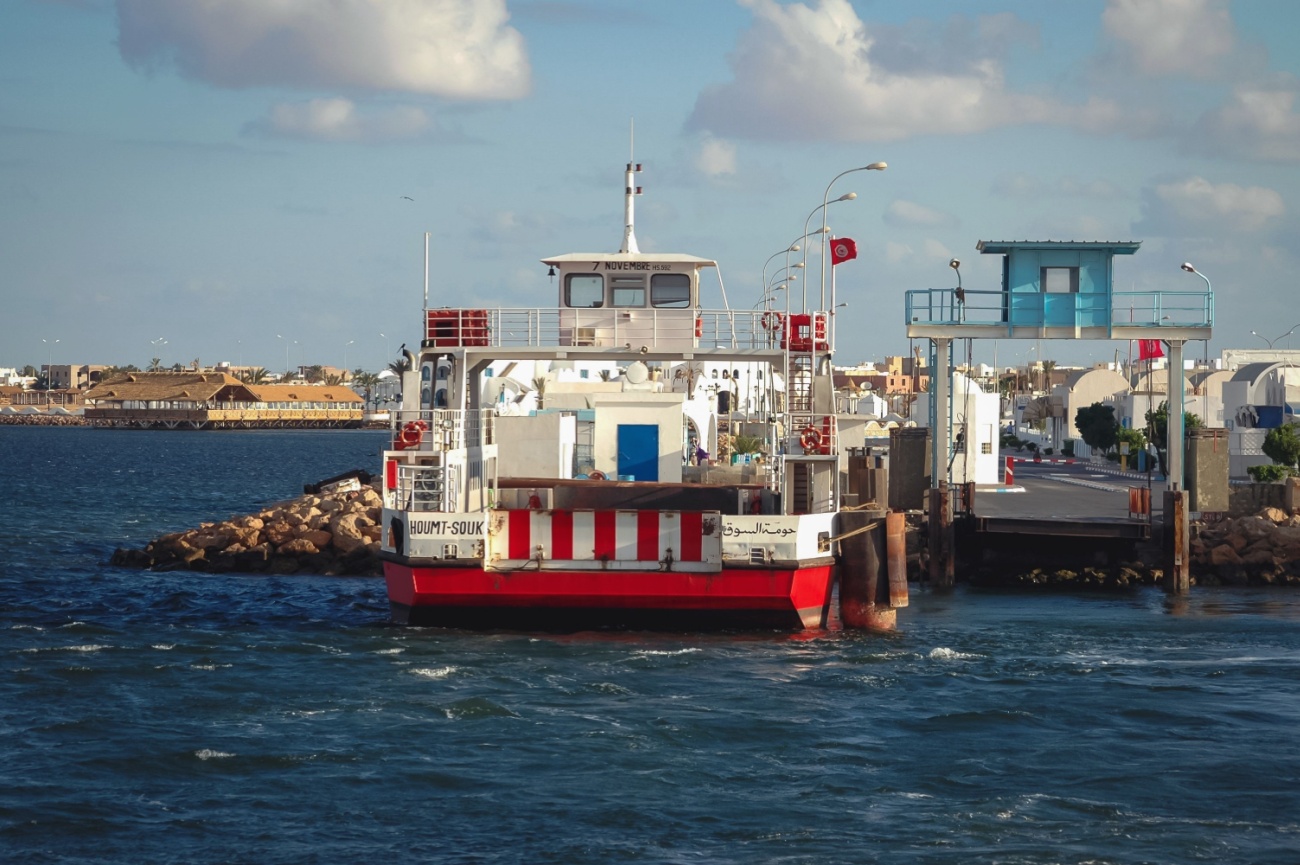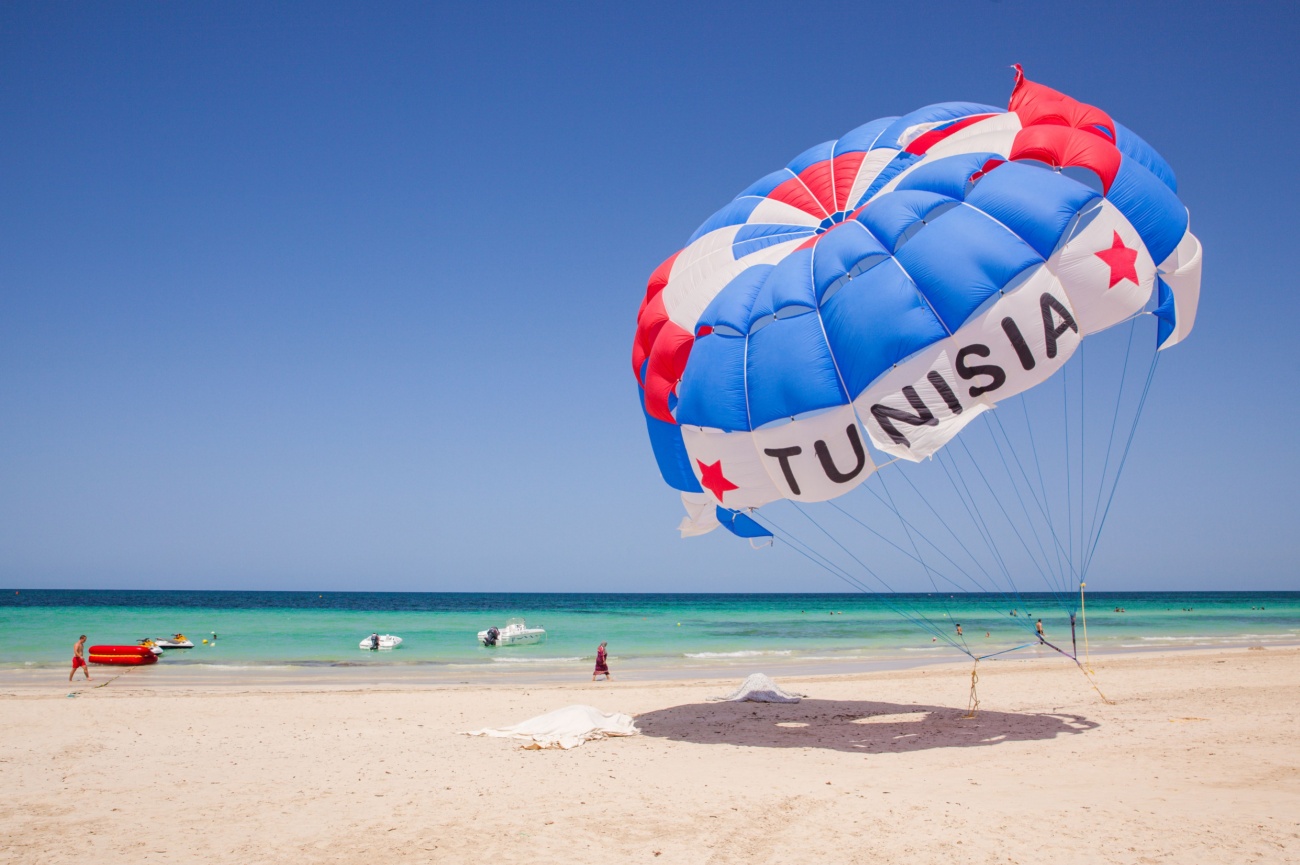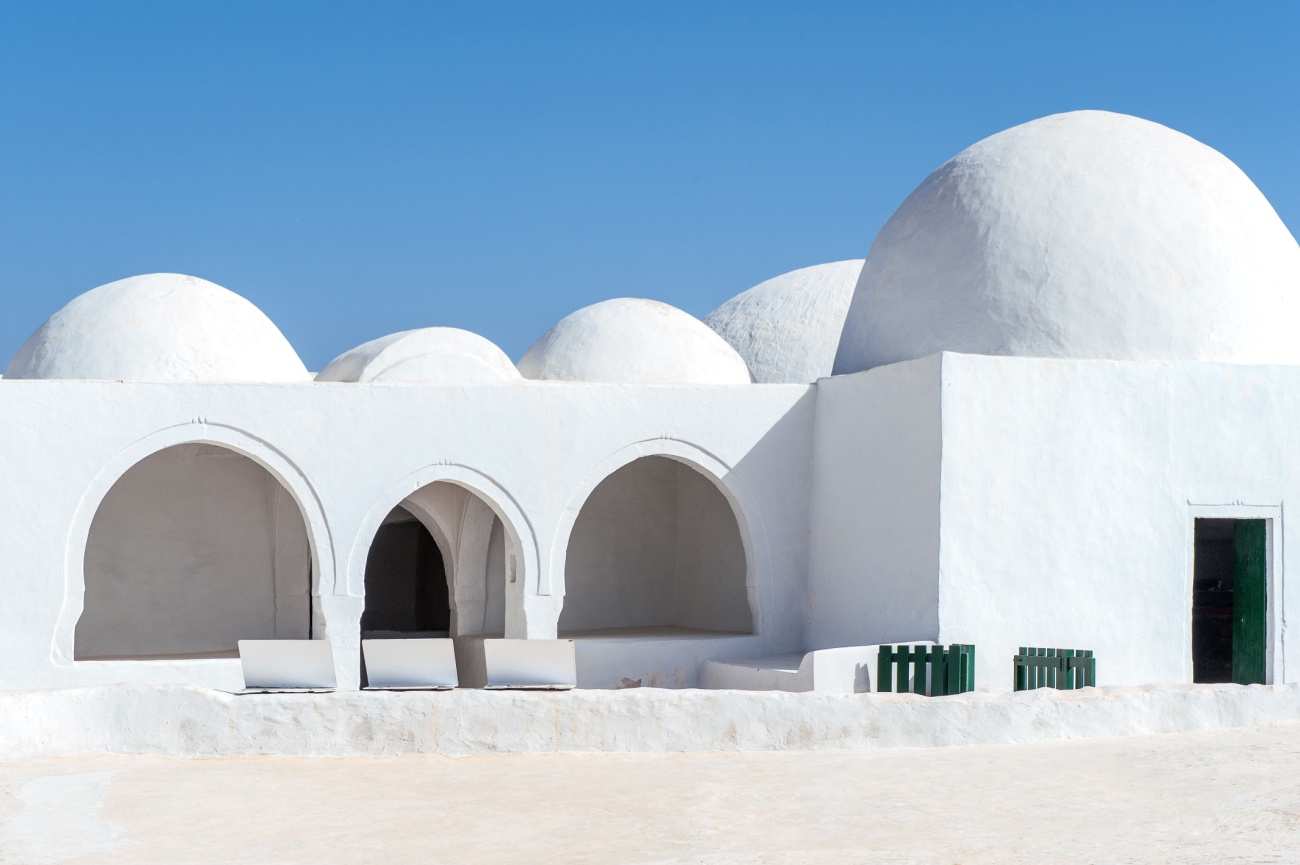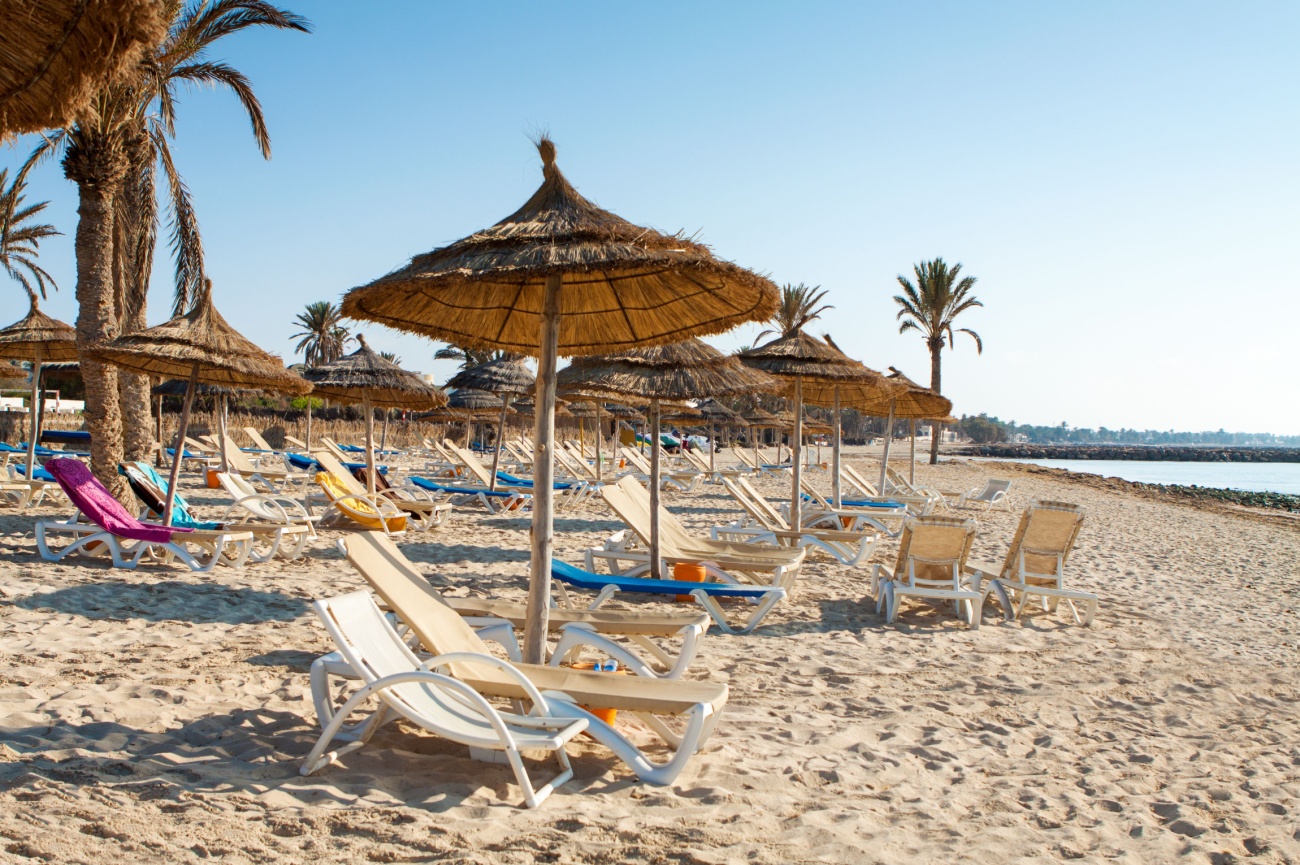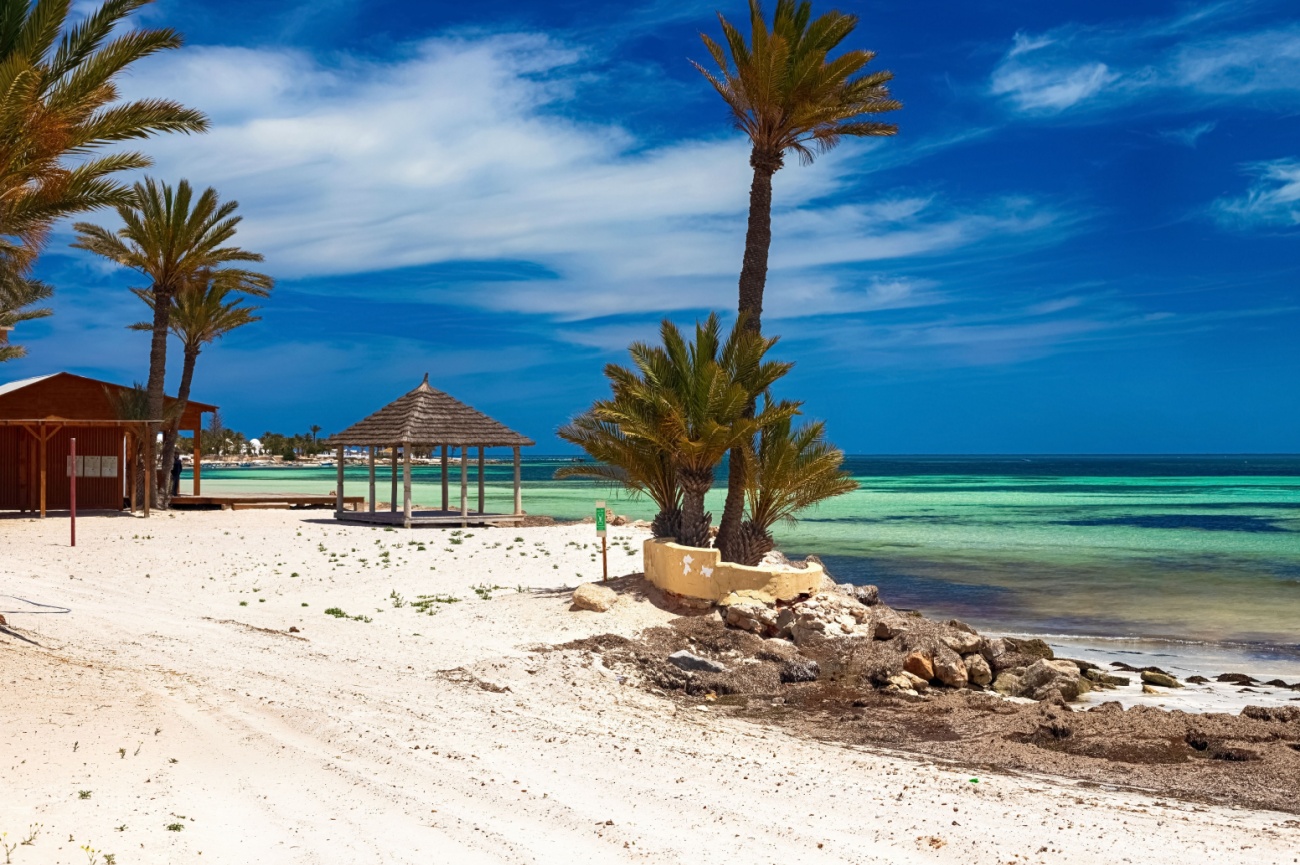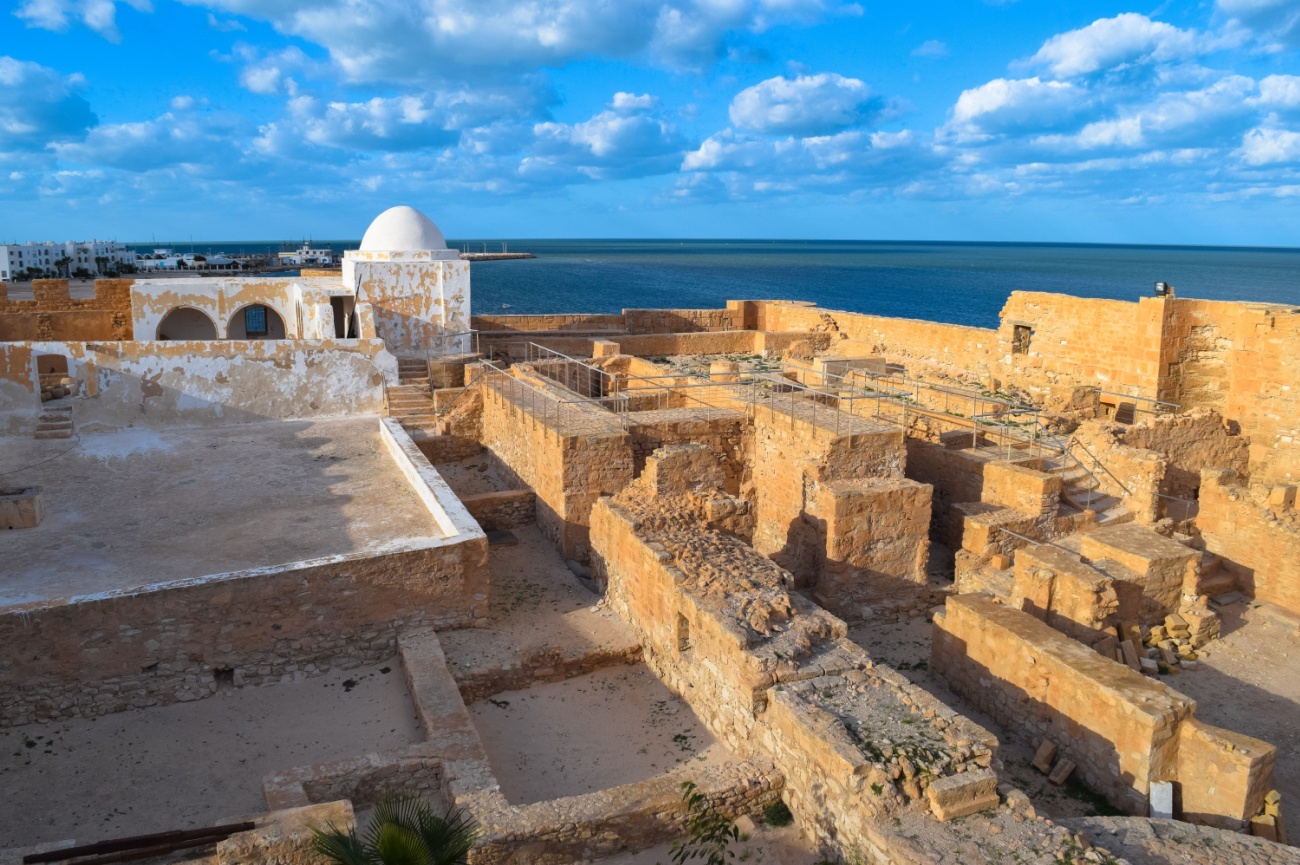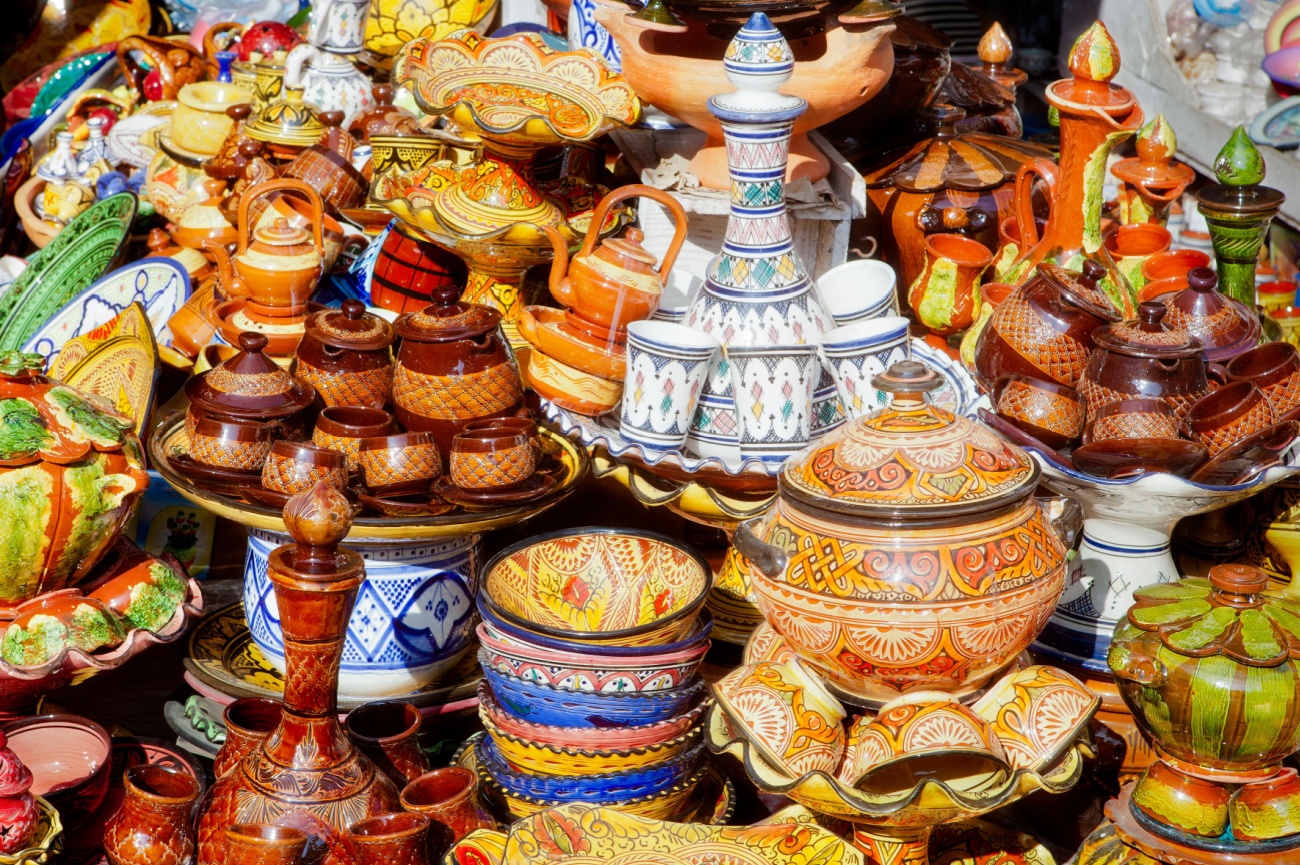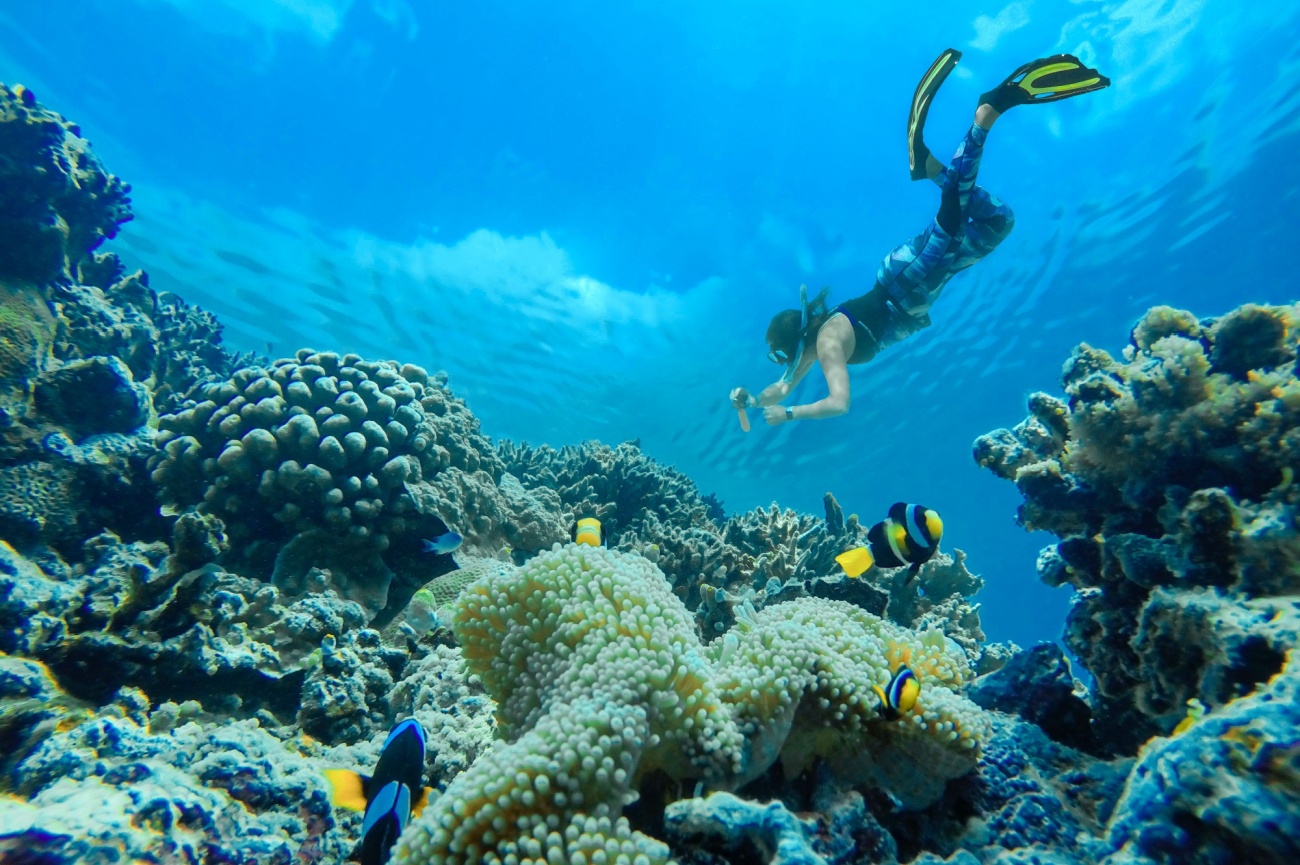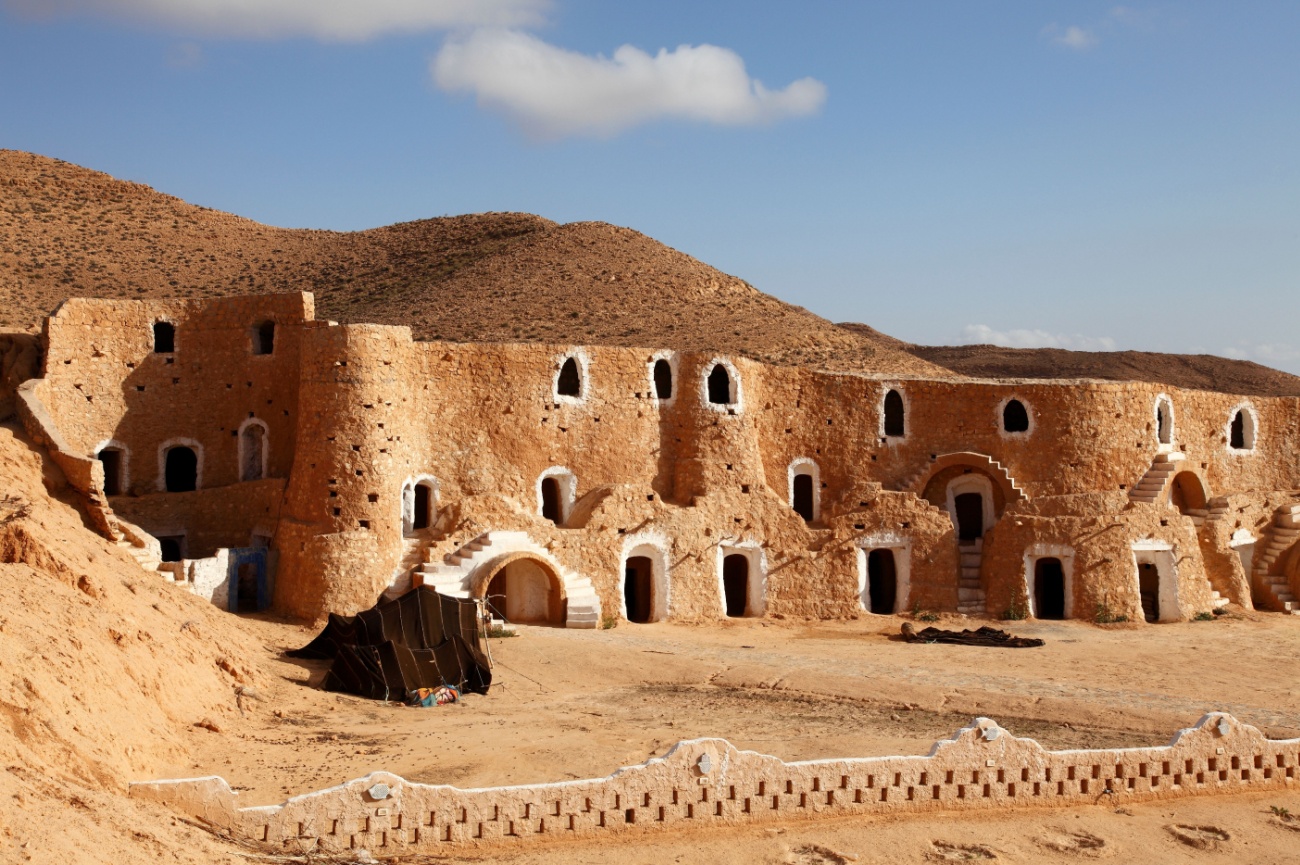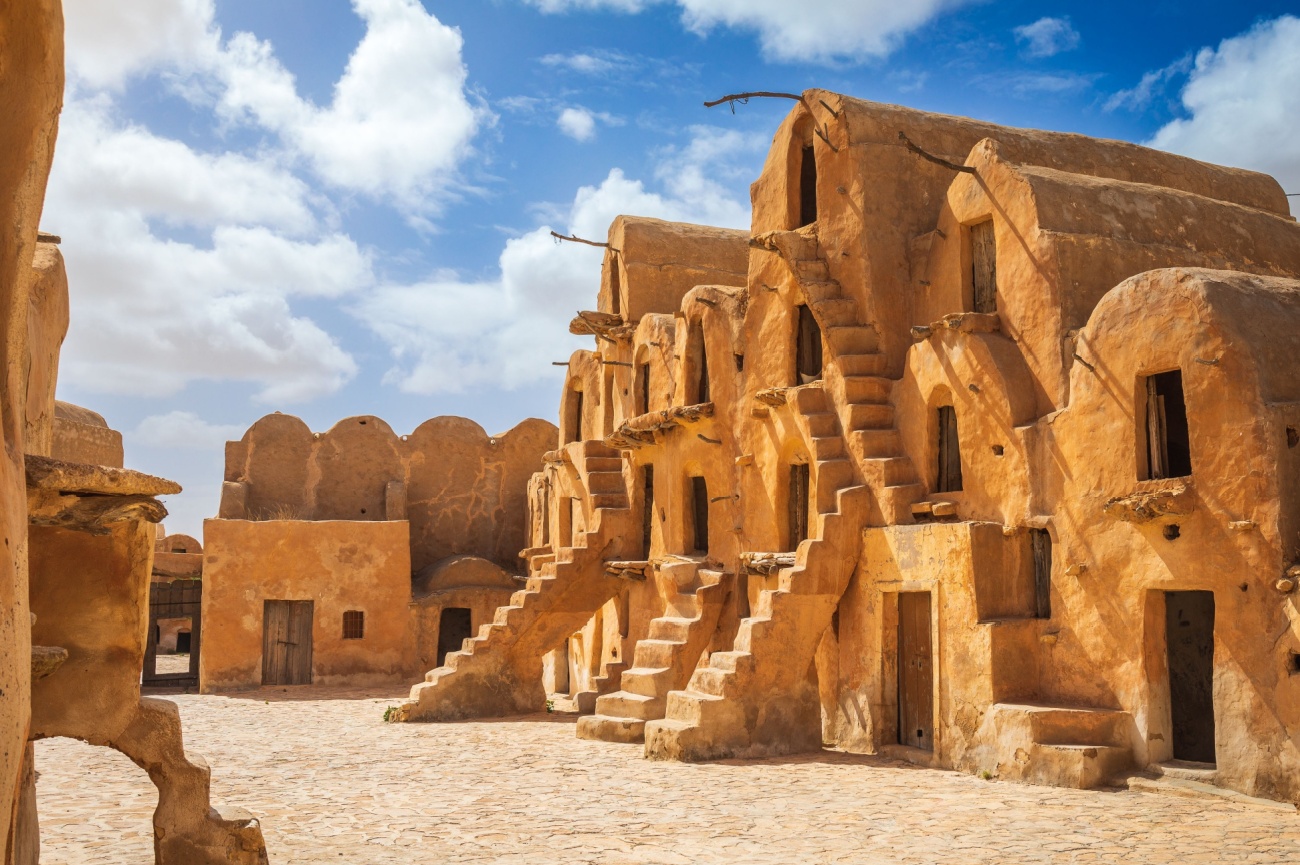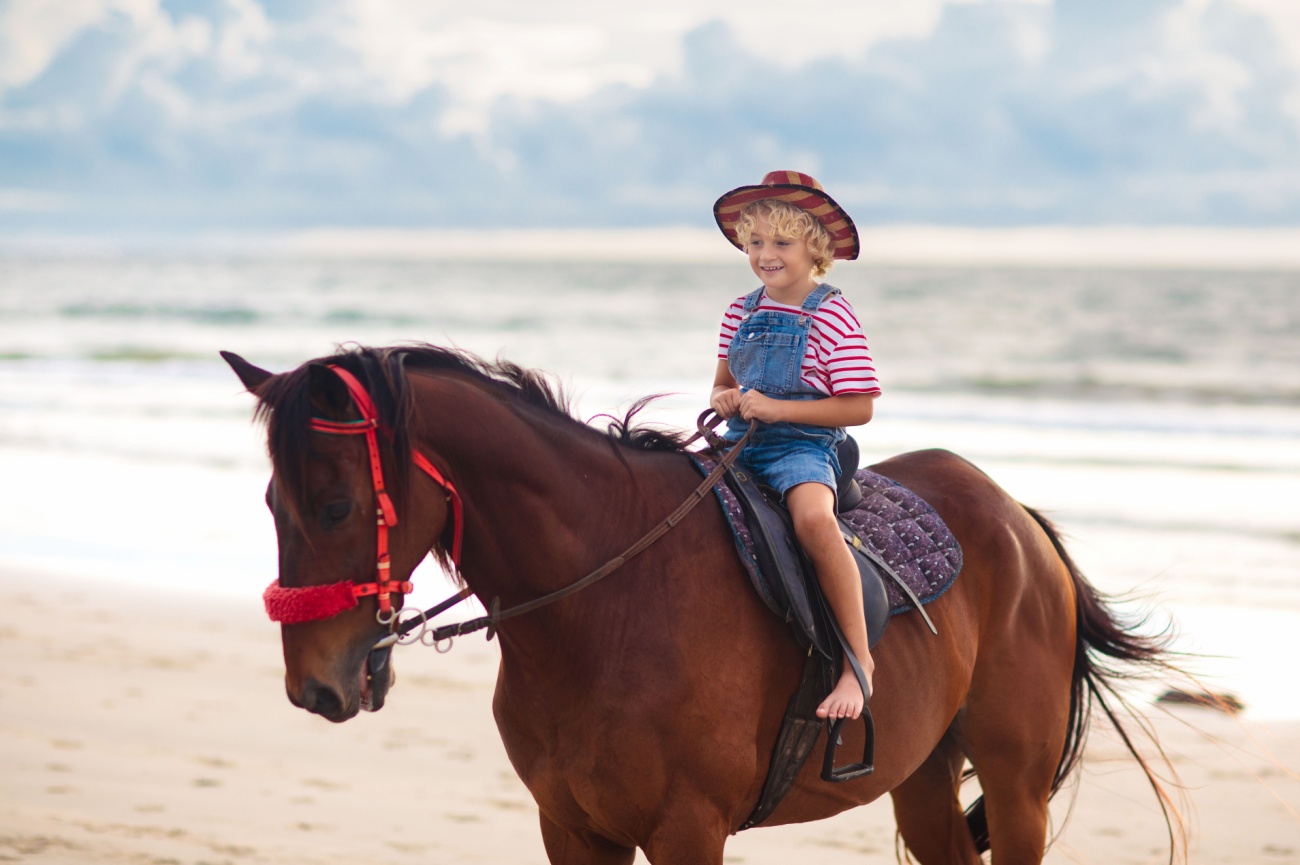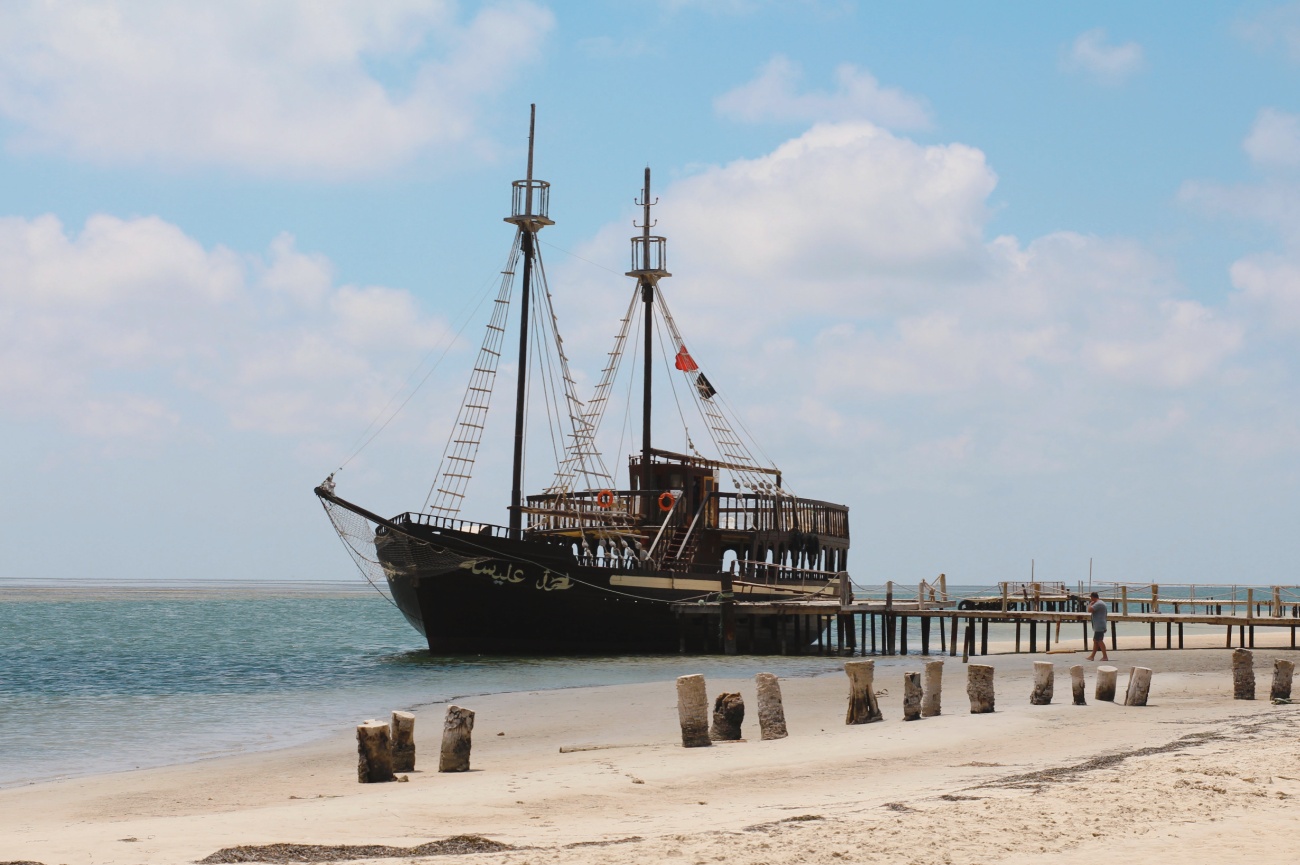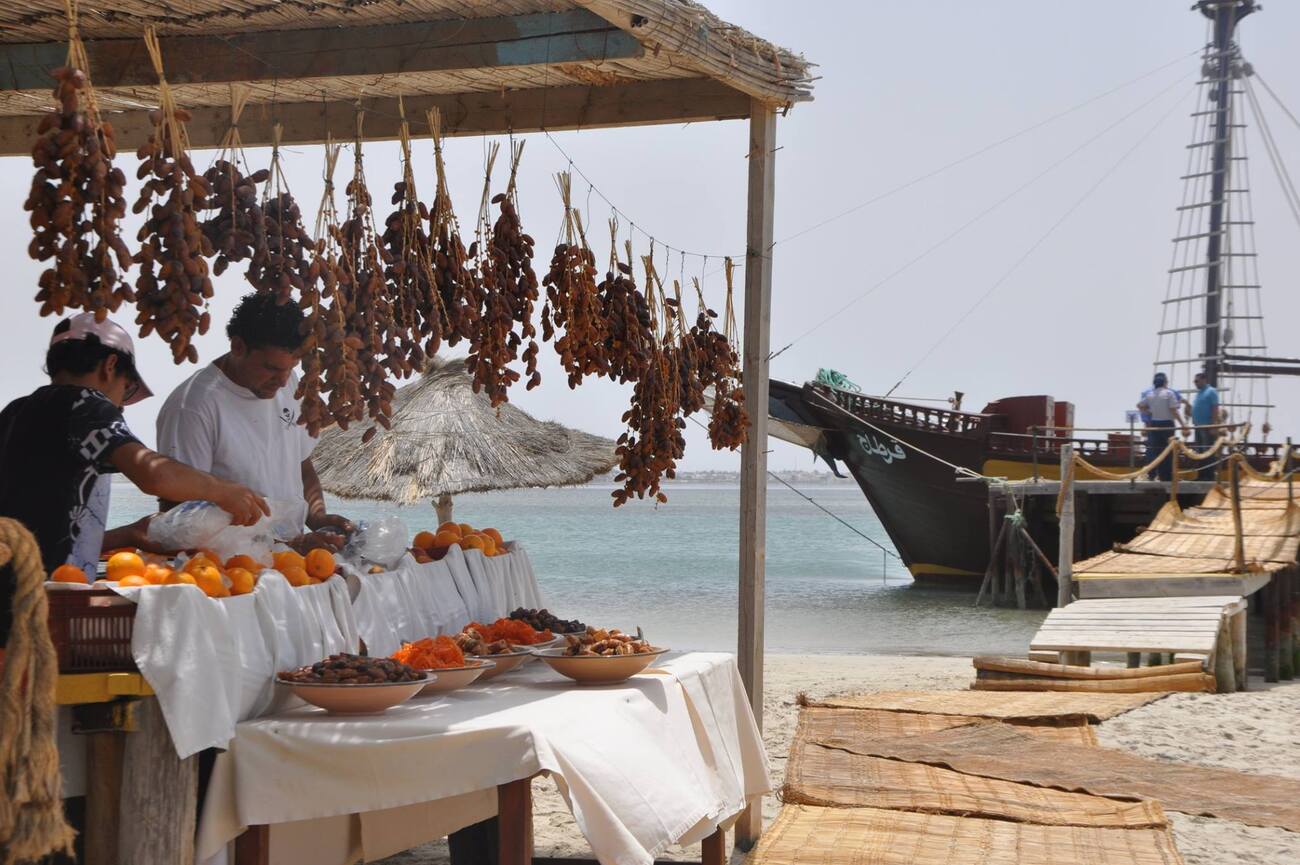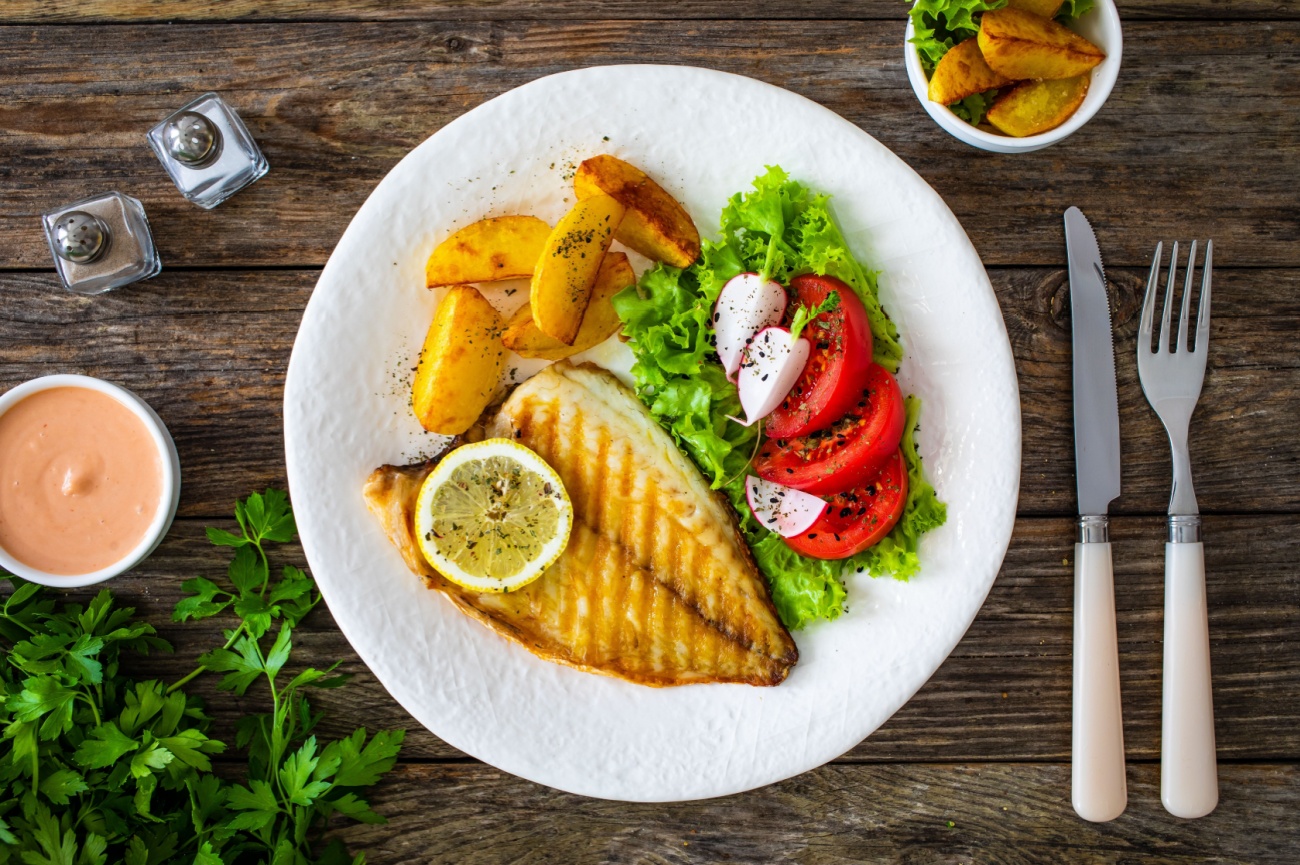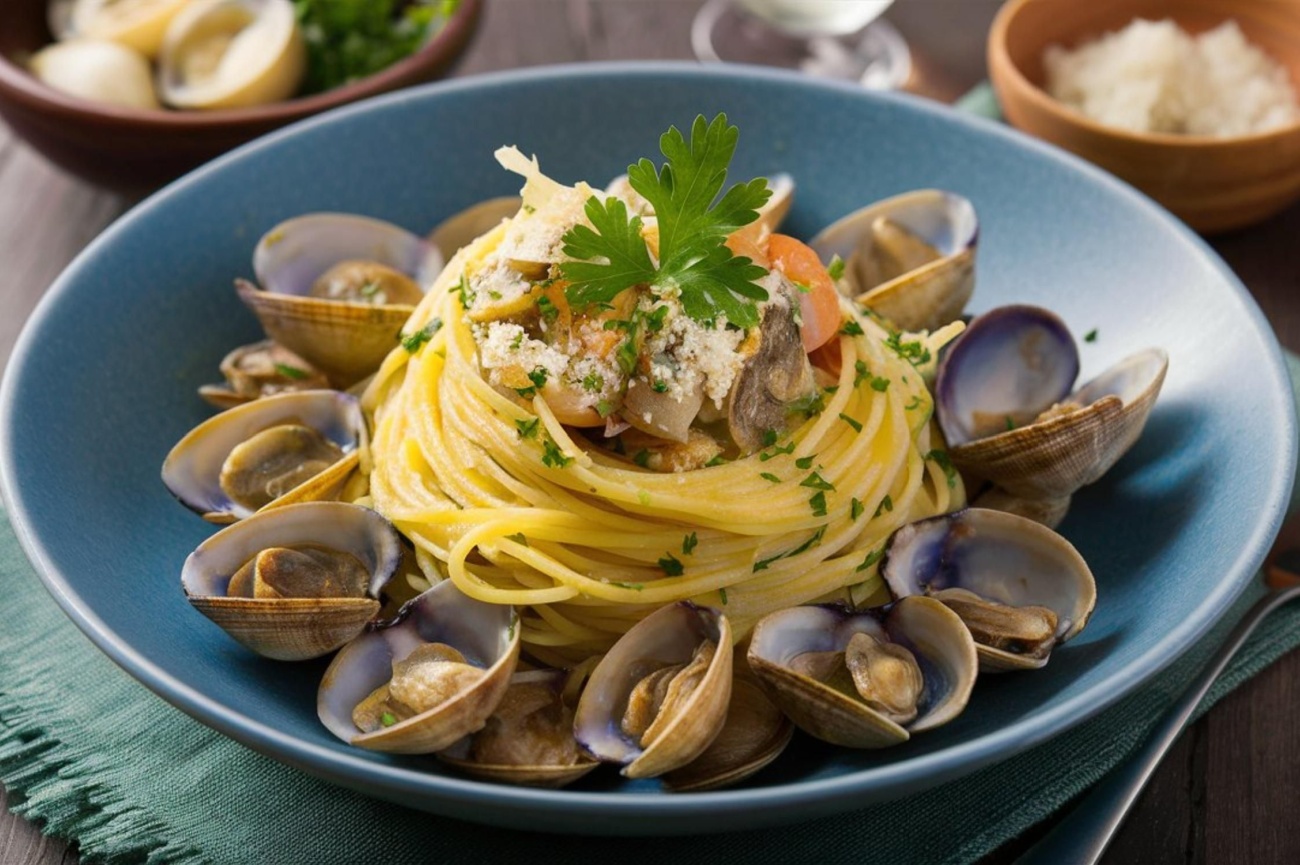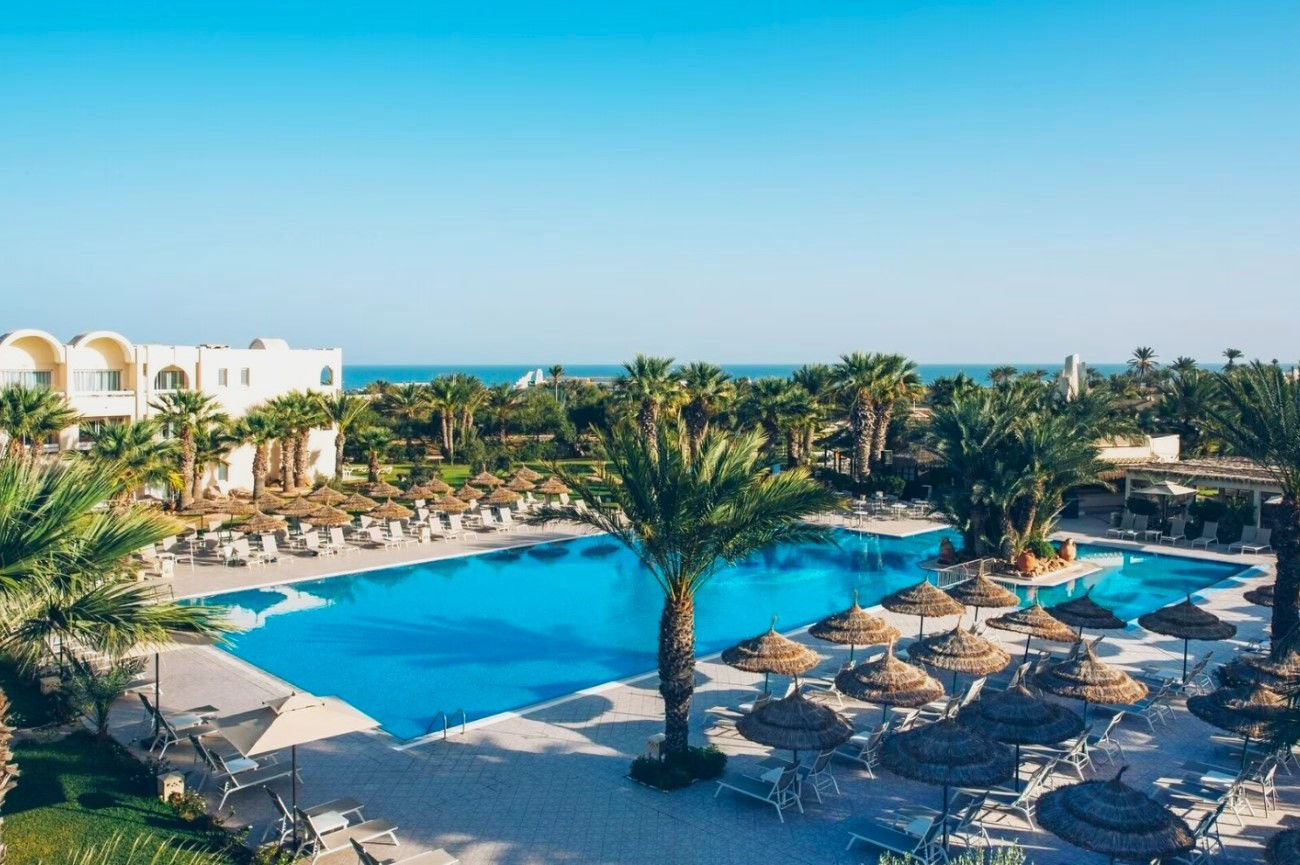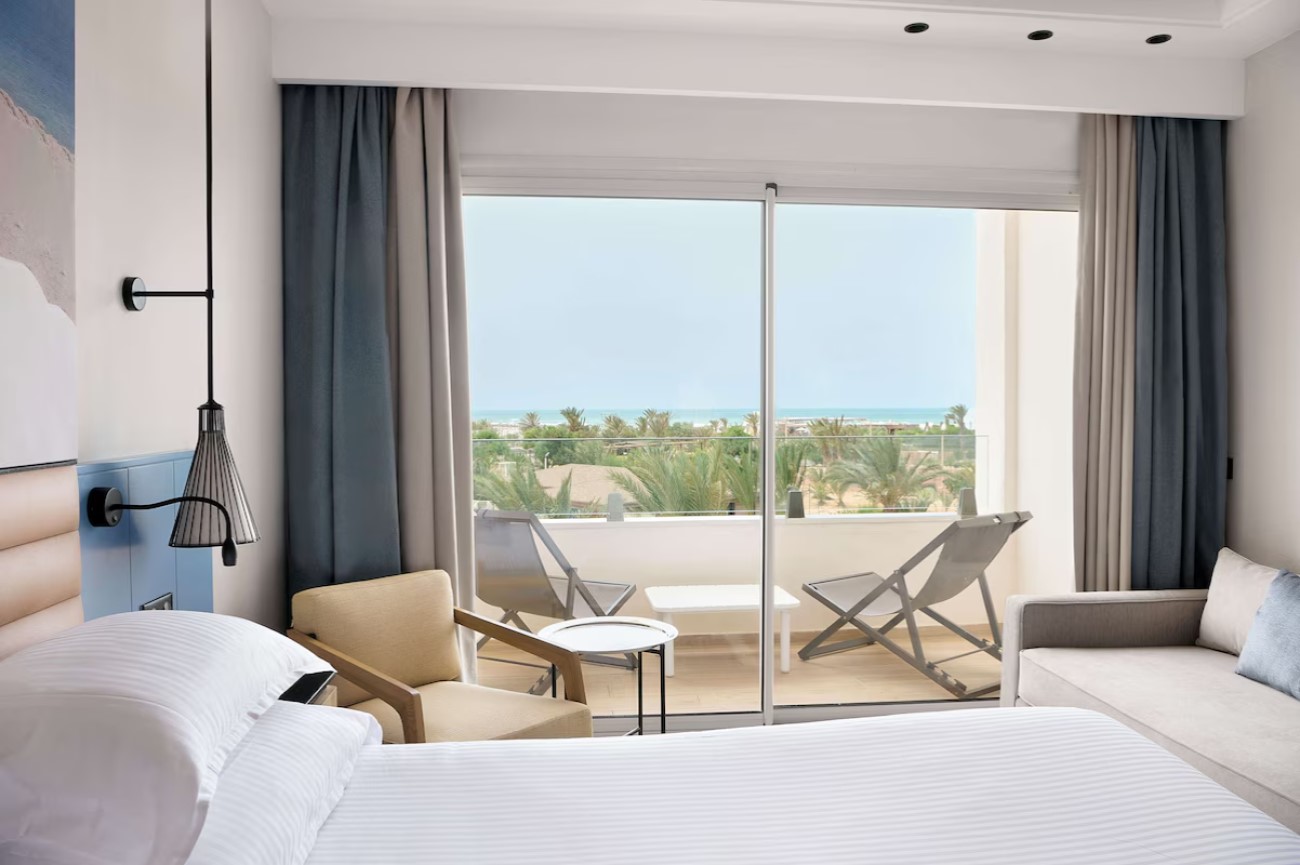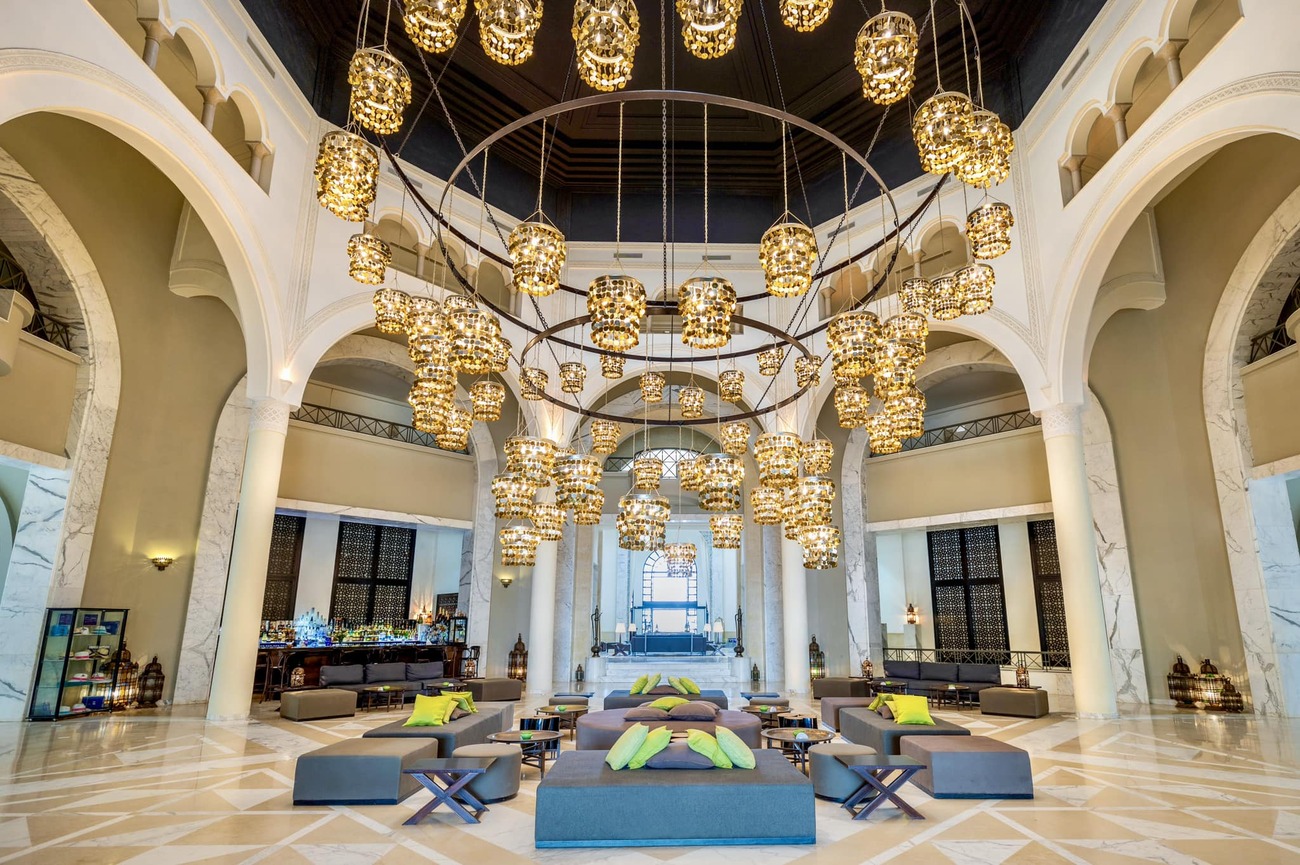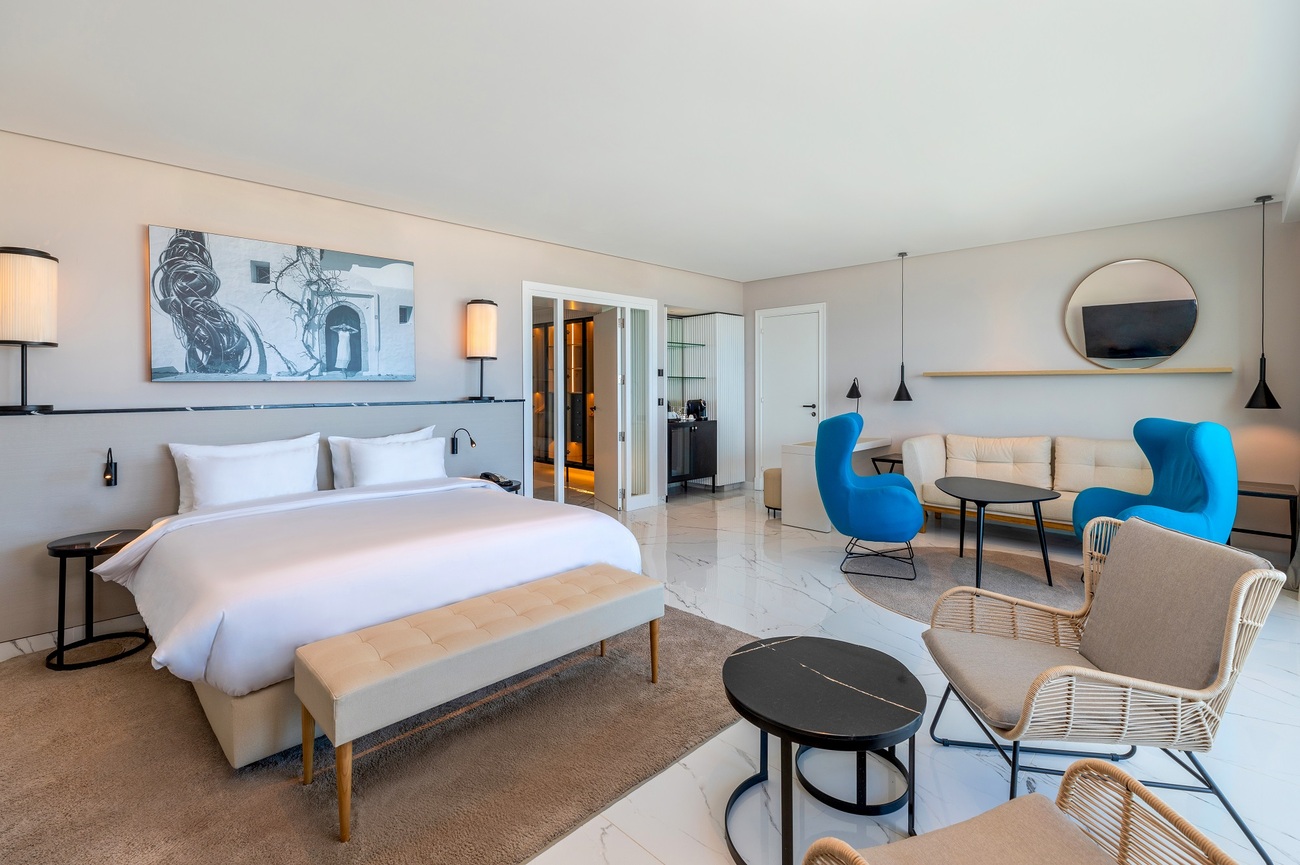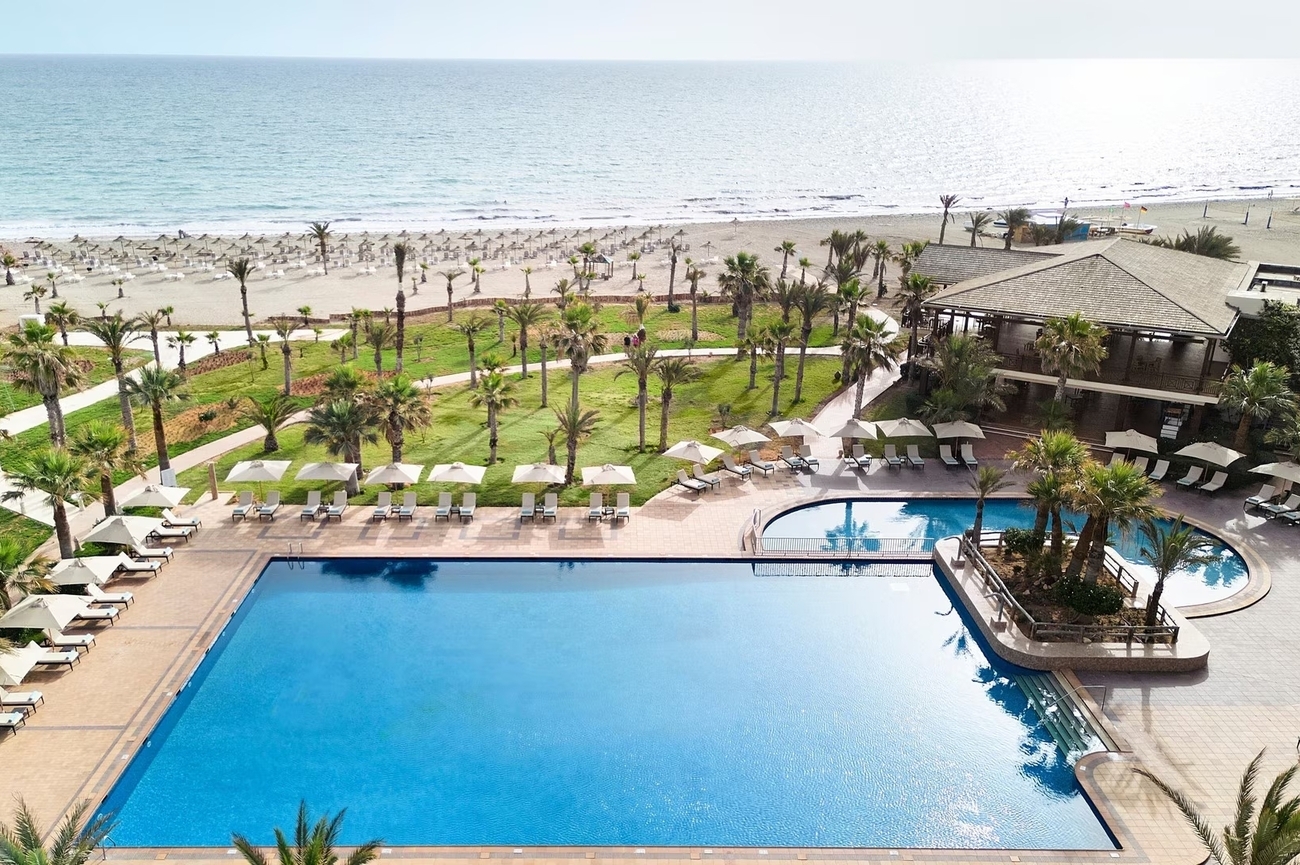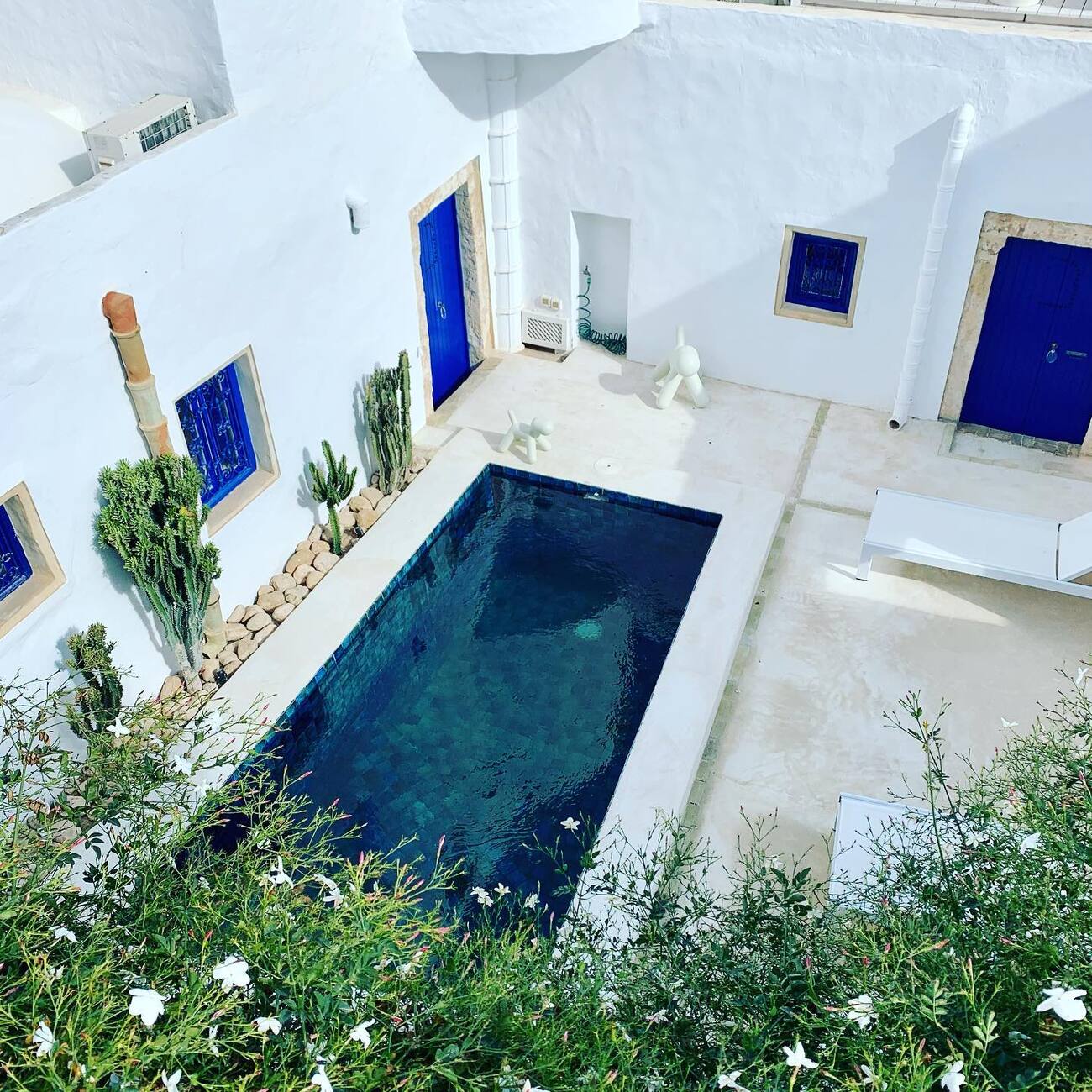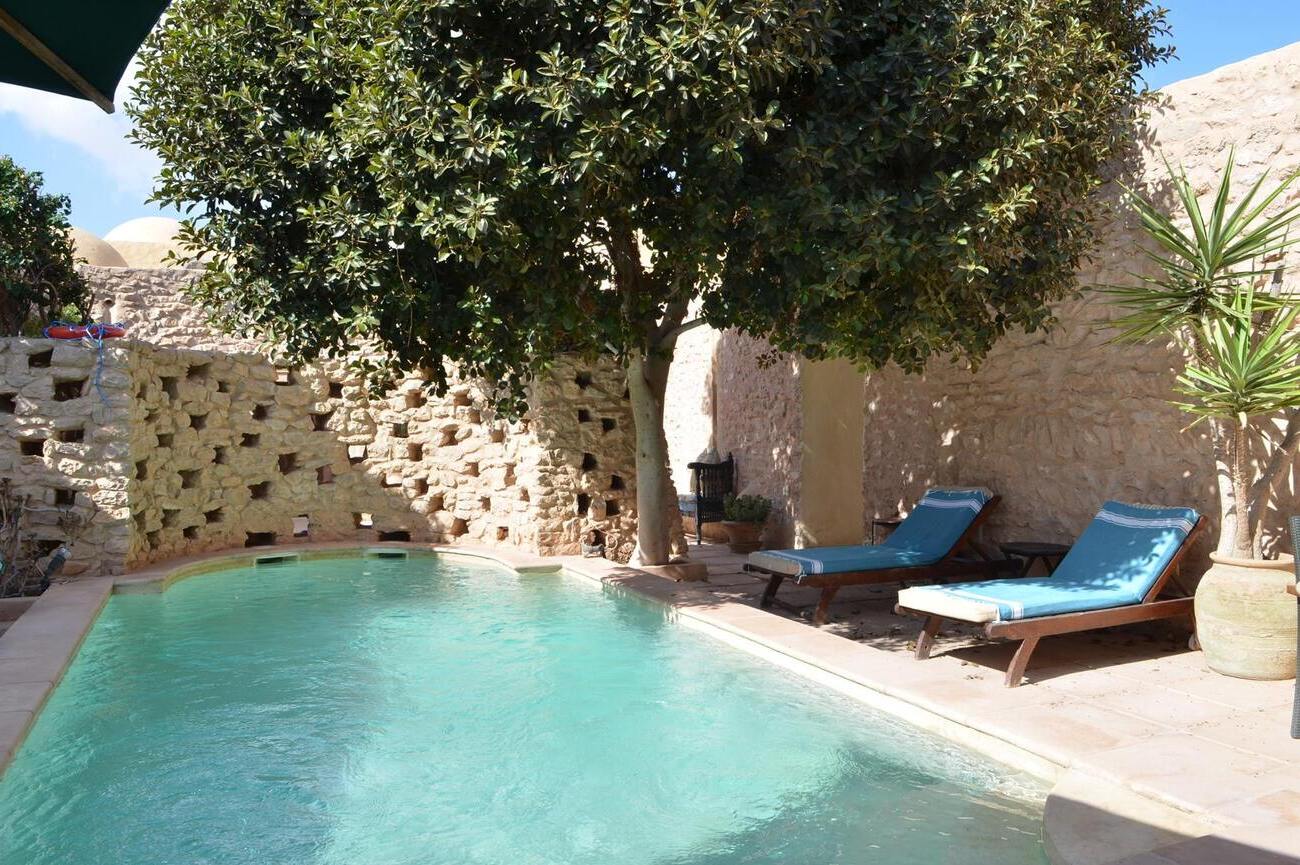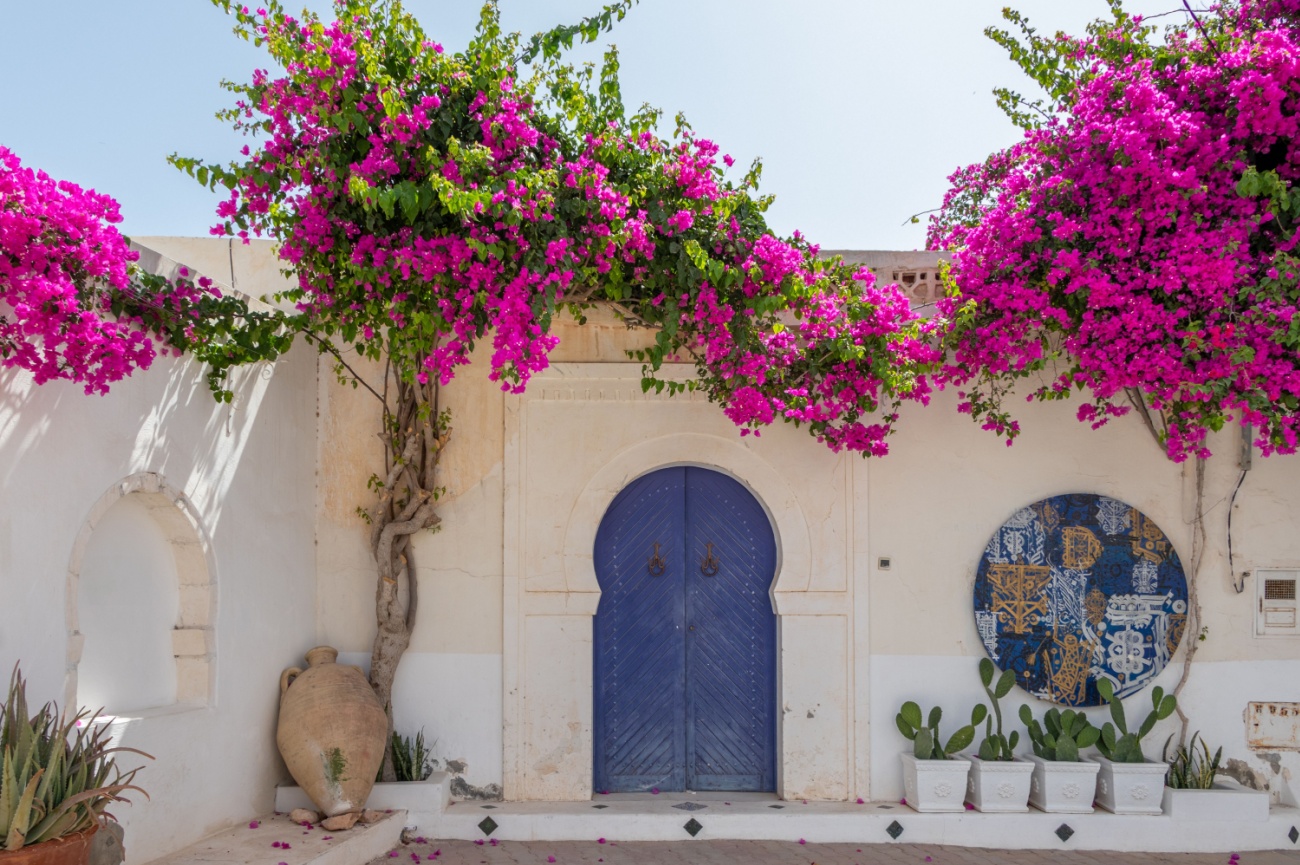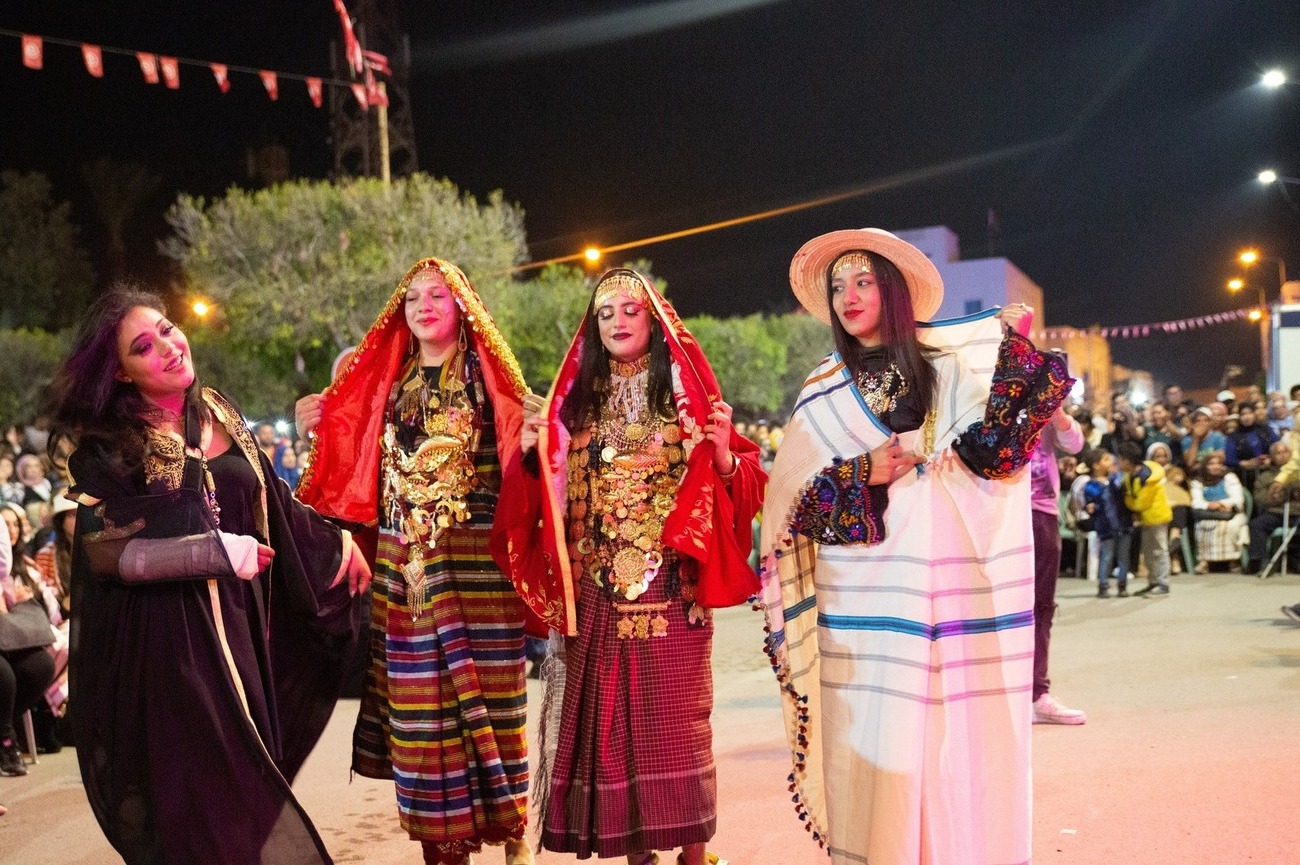Things to Do in Djerba: 2-Day Itinerary
Djerba is a beautiful island located just a few kilometers off the southern coast of Tunisia. Recognised by UNESCO in 2023 as a World Heritage Site, the island has everything from 5-star resorts with sandy beaches to abandoned forts and Roman ruins.
Whether you are looking for a destination for your next winter beach vacation, wish to explore picturesque villages with whitewashed houses, fortress-like mosques, and captivating wall murals, or visit different Star Wars filming locations out in the desert, a visit to Djerba promises to be an unforgettable experience.
This 2-day travel itinerary takes you to some of the best tourist attractions on the island and offers tips on where to stay and where to eat in Djerba.
Day 1

Morning: Houmt Souk Old Town
Djerba’s main town, Houmt Souk is your first stop in the morning. Inhabited in Roman times, this bustling market town was one of the most important ports in the region and a central area for merchants. Today, Houmt Souk is a touristy place known for its vibrant medina with white-washed buildings and colorful markets where you can buy everything from artwork, carpets, jewelry, and pottery to vegetables, spices, and fresh seafood.
Djerba
Traditional Heritage Museum
If you wish to know about life on the island and what people did for a living back in the day, check out the Djerba Traditional Heritage Museum in Houmt Souk. The museum is not huge but has enough exhibits to keep you occupied for at least an hour or two. Expect to see a fascinating collection of traditional costumes, antique ceramics, jewelry, and gold and silver crafts. Information and displays in Arabic, French, and English are well laid out and the museum is super easy to navigate.
Ghazi
Mustapha Tower
History buffs will want to visit this beautiful fort in Houmt Souk. Also known as Borj El Kebir, the Ghazi Mustapha Tower served as a defensive fort on the island of Djerba. You can see the remains of the fort from the outside or explore the interior for a small fee. There are a few old marble statues and ornamented stones worth checking out, as well as a small museum where you can learn about the history of the tower. From the top of the fort, you can enjoy majestic views of the port and the sea.
Marina
Djerba
We end our morning walk with a visit to Houmt Souk’s little fishing port. A rather small harbor, Marina Djerba is a lively place lined with a range of shops, dining establishments, and cafes overlooking the sea. You will notice a few pirate ships that offer tours to the nearby Flamingo Island anchored in the marina.
Day 1, morning - djreba Tour Map
Afternoon:
Djerba Explore Park
Located 20 kilometers east of Houmt Souk, Djerba Explore Park is a major tourist attraction on the island. You can spend the entire afternoon at this fabulous complex. It consists of three parts: a heritage zone, a crocodile farm, and a museum devoted to Islamic cultural heritage and art. Your first stop is the heritage zone, a replica of a traditional Djerbian village. Visitors can explore the reconstructed streets and alleys lined with coffee shops, eateries, and boutiques that offer all kinds of souvenirs. The heritage zone is also home to a camel-powered water well and olive trees and presses.
Lalla
Hadria Museum
Located within the Djerba Explore Park, this contemporary museum contains a world-class collection of traditional costumes, Tunisian potteries, jewels, religious artifacts, ceramics, carpets, and antique textiles. Lalla Hadria Museum is divided into 15 nicely decorated galleries and houses over 1,000 well-presented exhibits. Expect to spend an hour or two here.
Crocodile
Parc
Neighboring the Lalla Hadria Museum is a farm that hundreds of crocodiles call their home. Explore the landscaped lagoon area adorned with ponds and exotic plants and experience close encounters with crocodiles, tortoises, and lizards. The crocodiles also have their feeding time around 5 pm, so make sure to align your visit. On your way out, stop by the souvenir shop that offers crocodile plastic toys.
Day 1, afternoon - djerba Tour Map
Day 2

Morning:
Djerbahood
For day 2 of your Djerba island travel itinerary, you will need a car to get around. The first place on our list is the small village of Erriadah. With lovely white buildings and traditional architecture, this cute village is as beautiful and photogenic as the famous town of Sidi Bou Saïd. Within Erriadah, you will find a picturesque street art neighborhood also known as Djerbahood. It is an open-air exhibit area with captivating wall murals, architectural elements, ceramics, and beautiful flowers. We recommend hiring a local guide who can share the stories behind the artwork on the walls. Djerbahood is also home to a bunch of cozy cafes and souvenir shops.
El
Ghriba Synagogue
An important pilgrimage site for Jewish people, El Ghriba synagogue is located in central Djerba in the small village of Er-Riadh. This gorgeous synagogue dates back to the 6th century BC and was renovated in the 19th century. It features beautiful interiors with magnificent mosaics, blue tiles, and stained glass windows. Before entering the synagogue, women need to put on a scarf to cover their hair and shoulders. It takes about 5 to 10 minutes by car to get from Djerbahood to one of the oldest synagogues in Africa.
Guellala
Located in the southern part of the island, this small town is the best place to score pottery and ceramics. This ancient craft dates back to the Roman times and there are nearly 500 potters living in Guellala. You will have an opportunity to visit a few workshops and learn more about the tradition of making clay pottery. While you are in Guellala, stop by the fabulous ethnographic museum. Perched atop a hill, the Guellala Museum is dedicated to local traditions and customs and houses a lovely collection of traditional Tunisian costumes.
Sidi
Yeti Mosque
Our last stop in the morning is an abandoned mosque just outside of the town of Guellala. Sidi Yeti is no longer used as a mosque, but the remains of the building are quite impressive. The mosque is located just a stone’s throw from the sea and the sunset views from the top are breathtaking.
Day 2, morning - djerba Tour Map
Afternoon:
Djerba Ajim
The third largest town on the island, Ajim is known for its laid-back vibe and pretty white buildings. This coastal town was also used as a filming location for the Star Wars movies. You might recognise the popular Mos Eisley cantina, a dimly-lit drinking establishment from Star Wars: Episode IV of A New Hope. To feast on delicious Tunisian food and enjoy breathtaking views of the sea, visit the Restaurant Coucher de soleil in Djerba Ajim.
Cheikh
Yahya
The next place you are visiting is located just a 15-minute drive from the seaside town of Ajim. A wild beach far away from popular resorts and 5-star hotels, Cheikh Yahya is an ideal destination for travellers who wish to escape the crowds and find some peace and quiet. Apart from a few fishing boats, there are no facilities at this golden-sand beach, so make sure to pack water and food when visiting Cheikh Yahya.
Sidi
Jemour Mosque
Our last stop in the afternoon is another Star Wars filming location. Welcome to Sidi Jemour Mosque, a beautiful white structure located just a few steps from the sea. In Ottoman times, this mosque used to serve as a watchtower to warn the locals of enemy ships approaching. Nowadays, most people who come here are Star Wars fans and travellers searching for that perfect sunset view. The mosque was used as the location of Tosche Station from the Star Wars A New Hope film set.
Day 2, afternoon - djerba Tour Map
Other
things to see in Djerba
- Fadhloun Mosque: You will find this remarkable white-washed mosque from the 14th century just outside the city gates of Houmt Souk. Surrounded by a pretty courtyard, this captivating building is characterised by 3 white domes. Right in front of the mosque, you will find several rooms that used to serve as a bakery and a school.
- Sidi Mahrez Beach: There is no shortage of beautiful beaches on the island and Sidi Mahrez is definitely the most popular stretch of sand. Located on the northern coast, it is also the most developed beach in Djerba. There are many hotels and resorts here, as well as a good choice of cafes and dining establishments. Whether you wish to enjoy camel/horse rides, try water sports like kayaking and paddleboarding, or visit the nearby Taguermes Lighthouse, there is plenty to look forward to when visiting Sidi Mahrez.
- Seguia Beach: Slightly less developed than Sidi Mahrez, Seguia Beach is located in the southeast of Djerba. In recent years, a few resorts opened up along this 5-kilometer-long stretch of sand. Most of these resorts are located along the southern end of the beach. You can rent sun loungers and umbrellas and enjoy camel and horse rides.
- Archeological Site of Meninx: Once a vibrant Roman city, this archaeological site can be found on the southern tip of the island. Although most buildings have been destroyed, travellers will have an opportunity to see columns and remains of Roman villas. Explanatory signs are in Arabic, French, and German.
- Borj El Kastil Fortress: This medieval fortress with high towers was built by the Aragonese back in the 13th century. A UNESCO World Heritage Site from 2023, Borj El Kastil Fortress is a popular attraction among tourists and locals who come here to enjoy panoramic views of the sea from the top of the fort. The area can be muddy, so make sure to check the weather before visiting the site or hire a local guide with a 4x4 vehicle.
- Aziz Shopping Center: If you are searching for a place to buy souvenirs, this shopping center in Midun is where you want to go. Prices are predetermined, clearly displayed, and much cheaper than in resort shops. A large selection of souvenirs ranging from clothes and handbags to jewelry is available. You can pay by card or cash.
- Club De Plongée La Sirène - Djerba Diving Center: The island of Djerba is a popular destination for scuba diving. Visit Club De Plongée La Sirène, a local tour operator that offers scuba diving lessons for both beginners and experienced divers. If you opt for the introductory diving course, professional instructors will take the time to explain everything and eventually take you to the nearby reef for a dive in around 6 meters of water. Experienced divers can look forward to exploring some of the best shipwrecks on the island.
Day trips from Djerba
- Matmata: Located a 3-hour drive from the island, this small village in southern Tunisia is famous for its unique housing structure also known as troglodyte. These houses with unusual cave-like entrances and extensive tunnels look absolutely gorgeous. Therefore, it comes as no surprise that one of these buildings (Sidi Driss) was used as a filming location for Star Wars movies. It served as Luke Skywalker’s family home, the Lars homestead. There is a small museum right behind the building.
- Tataouine: Another day trip option from Djerba is the rocky city of Tataouine. Although not a single scene of the Star Wars movie was shot in the city, Tatatouine provided inspiration for the movie and the name of Skywalker’s homeland “Tatooine”. It will take you about 2 hours by car to get from the island to Tatatouine.
Best golf courses in Djerba
- Djerba Golf Club: Located on the northeast coast of the island, the Djerba Golf Club offers a 27-hole course divided into three 9-hole circuits: Les Palmiers, La Mer, and Les Acacias. The most challenging course is Les Palmiers, while Les Acacias is designed for beginners. The greens and fairways are very well maintained and surrounded by beautiful palm and olive trees. You can rent equipment from the golf club and there is an on-site restaurant where you can try tasty dishes like beef fillet with dried tomatoes and meat carpaccio.
Things to do with kids in Djerba
- Aqua Park Pirate: Travellers visiting Djerba with children will find this exciting water park in the city of Midun close to the Djerba Explore Park. With a large swimming pool, a gentle river, and a wide range of fun slides, Aqua Park Pirate is probably the best place to on the island to visit with kids. For a thrilling experience, we recommend the Kamikaze slide course which has a few drops. There is also the Blackhole, a closed slide that offers an unforgettable sliding experience. In addition to slides and swimming pools, the aqua park also has resting/sitting areas and a few cafes and eateries.
- Horseriding (Ranch Adada Djerba): Although many local operators on the island offer horseback riding, Ranch Adada Djerba is definitely our first pick when it comes to this fun family-friendly activity. The owner, Morgan is super friendly and very passionate about horses. The landscapes throughout the route are magnificent and there are a few different horseback riding packages to choose from. The beach route is spectacular and ideal for kids who wish to enjoy horseback riding along the beach. Morgan also offers camel rides, jet skis, and quad tours around the island.
- Pirate Ship Cruise: A visit to Ras Rmal (Flamingo Island) with a pirate ship boat is the most requested excursion on the island, especially by families with children. The pirate ship departs from Houmt Souk and takes passengers to an eco-reserve, just off the coast of Djerba. The boat ride lasts for about 90 minutes and includes everything from entertainment to dancing and music. You might even spot a few dolphins along the way. Once the ship docks at Flamingo Island, visitors can swim in the crystal-clear waters and enjoy activities like camel/horse rides and quad bike tours. We should probably mention that the actual flamingos on this island can only be seen between October and March.
Where to eat in Djerba
- Restaurant Haroun: Wish to dine outside on the deck of a ship, enjoy views of fishing boats in the harbor, and listen to traditional Tunisian music while on vacation in Djerba? Book a table at Restaurant Haroun, the most romantic restaurant in Houmt Sous. With top-notch service, wonderful ambiance, beautiful oriental décor, and tasty foods, this restaurant truly has it all. The menu is extensive and you can choose between grilled fish, seafood, tagines, fresh salads, and Tunisian desserts. Seafood lovers who wish to try a bit of everything should definitely order the giant seafood platter.
- Restaurant Djerba Lina: One of the most popular dining establishments on the island, Djerba Lina is all about traditional Tunisian cuisine. Book a table on their lovely terrace and try everything from fresh seafood to BBQ. Customers say how the sea bream and prawns are delicious. If you prefer meat, we recommend the beef fillet and the ribs.
- Restaurant Essofra: Located in Houmt Souk, this is probably the most beautiful restaurant on the island. In terms of décor, Essofra resembles a farmhouse with an authentic design. The menu is extensive with options like fried fish, shrimp, meatballs, couscous with lamb, and tagine. We recommend ordering the delicious octopus appetiser and the hearty chorba soup. Finish off your meal with a cup of refreshing mint tea.
- La Lagune: If you wish to enjoy majestic views of the beach, pay a visit to this lovely restaurant in the Midoun area. You will be dining just a few steps from the water and can even chill on sun beds. La Lagune offers a simple menu with plenty of seafood/fish dishes and salads. Spaghetti with seafood is a popular choice, as well as shrimp and octopus. La Lagune does not serve alcohol.
Where to stay in Djerba
- Iberostar Waves Mehari Djerba: This all-inclusive 4-star hotel with direct access to the beautiful Sidi Akkour Beach is an ideal place to stay for families with children visiting Djerba. The hotel offers 2 swimming pools, a few restaurants, tennis courts, a fitness center, and a spa with Turkish bath and massage services. Guests say how the animation team is fantastic and offers an amazing entertainment program for both adults and children throughout the day. Attractions like Le Pirate Aqua Park and Djerba Golf Club are easily reachable.
- Radisson Blu Palace Resort & Thalasso: With a beautiful private beach area, 5 amazing restaurants where you can enjoy Italian and Tunisian cuisine, state-of-the-art fitness facilities, and a spa center that offers massage treatments and a sauna, this luxurious 5-star resort is one of the most exclusive accommodation options on the island. The animation program is great and includes everything from darts to power yoga and aqua sports.
- Iberostar Selection Eolia Djerba: Travellers will find this all-inclusive 5-star hotel on the Zone Touristique strip in Midoun, Djerba. One of the newer resorts on the island, Iberostar Selection Eolia Djerba offers a renowned Thalassotherapy center with a wide range of treatments, well-maintained gardens surrounded by palm trees, 7 bars and restaurants, and lots of fun activities for both adults and children. The property offers direct access to a beautiful beach with private sunbeds and umbrellas.
- Dar Bibine: If you wish to avoid the hotel ‘Zone Touristique’ crowds, we recommend booking your stay at this nicely decorated guesthouse in the well-preserved medina of Erriadh. The owner, Gerald is a great guy with an eye for design. With immaculately decorated rooms, a beautiful rooftop terrace, and a picturesque courtyard with a small swimming pool and sun loungers, Dar Bibine looks amazing. Guests have free access to the hammam and can enjoy tasty Tunisian dishes for breakfast and dinner. Wish to explore the neighborhood? Dar Bibine offers free bicycles for their guests.
- Dar Dhiafa: Located in the village of Erriadh, Dar Dhiafa is a charming boutique hotel with 2 swimming pools, an on-site restaurant that serves both Tunisian French dishes, and a range of charming suites and rooms. Guests like the décor with antique furniture and beautiful artwork and say how there are several quiet shaded patios scattered around the property. There is also a lovely lounge bar where you can enjoy interesting cocktails and wines by the glass and bottle.
The best time to visit Djerba
The island of Djerba has a typical desert climate influenced by the Mediterranean Sea. The summer season here is hot and dry with average temperatures over 30 °C. If you wish to stay in a beachfront resort on the Zone Touristique strip and swim in the sea, you can visit the island from June to September. For sightseeing and exploring tourist attractions in Djerba, we recommend visiting the island in spring (March to May) and autumn (September to November) when the weather is pleasant.
Djerba Festivals
- The International Ulysse Festival of Djerba: The most popular festival on the island, the International Ulysse Festival of Djerba starts in July and lasts until August. During this cultural event, you will have an opportunity to see performances by local musicians and actors, a wide range of events dedicated to sports, plenty of entertainment for children, and performances of renowned theater groups and ballroom dance teams.
Our offices:
